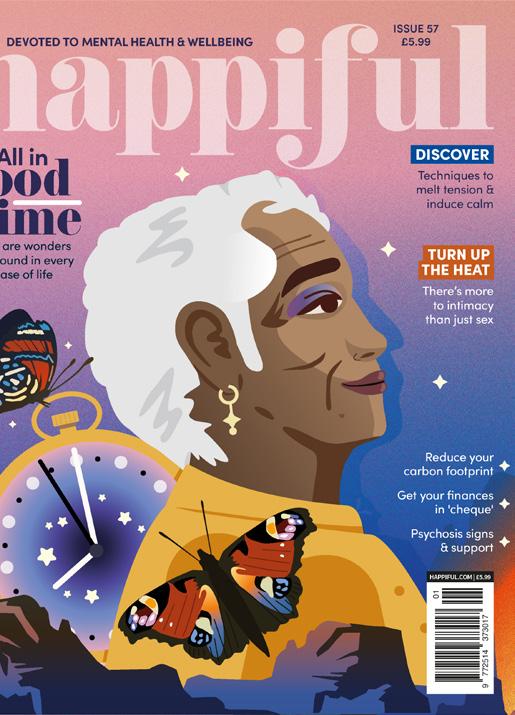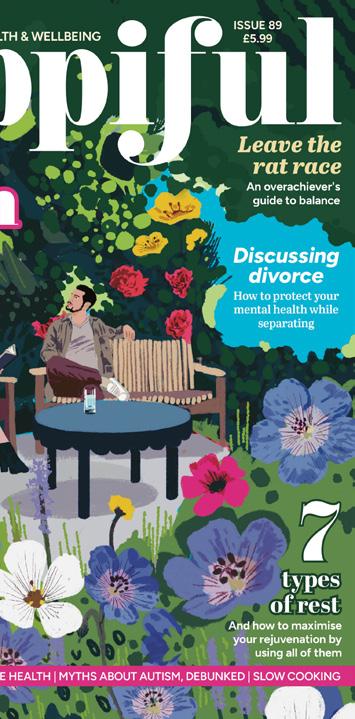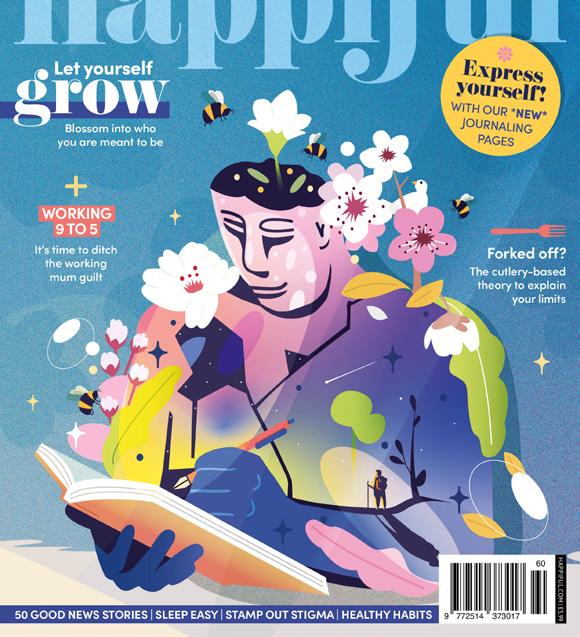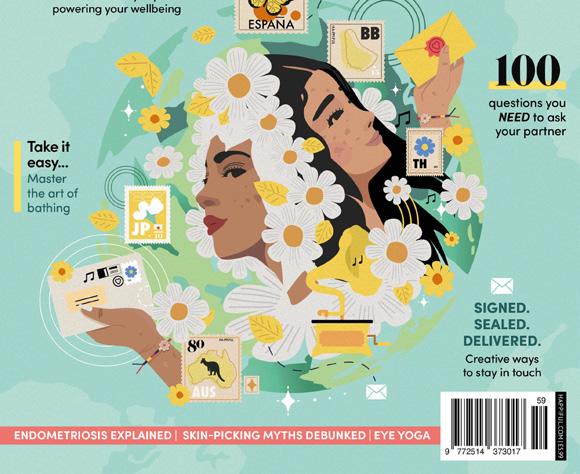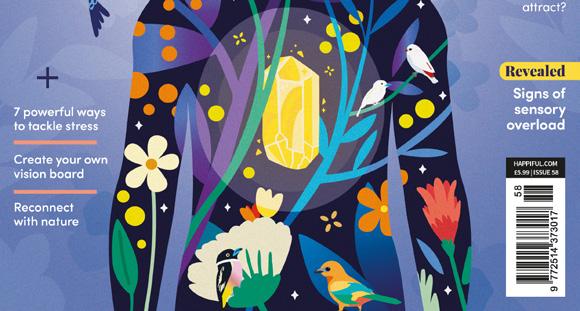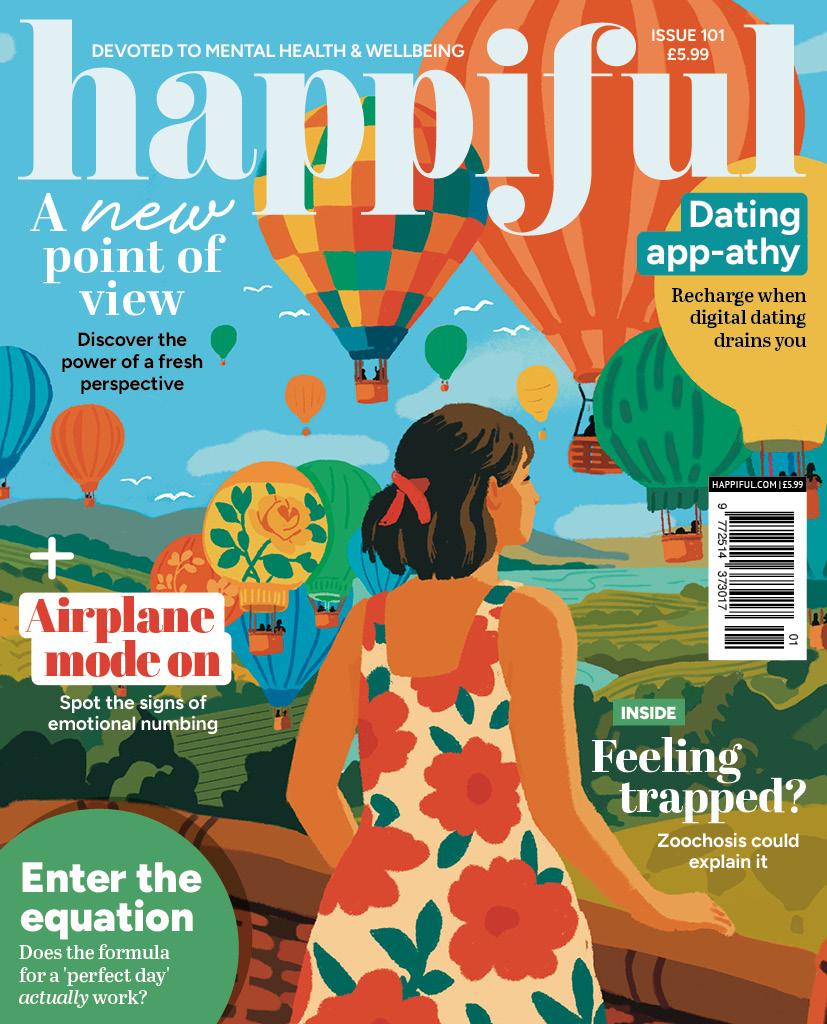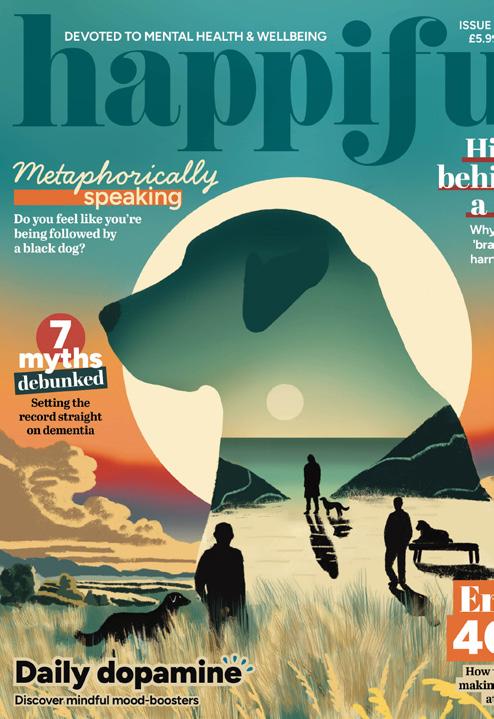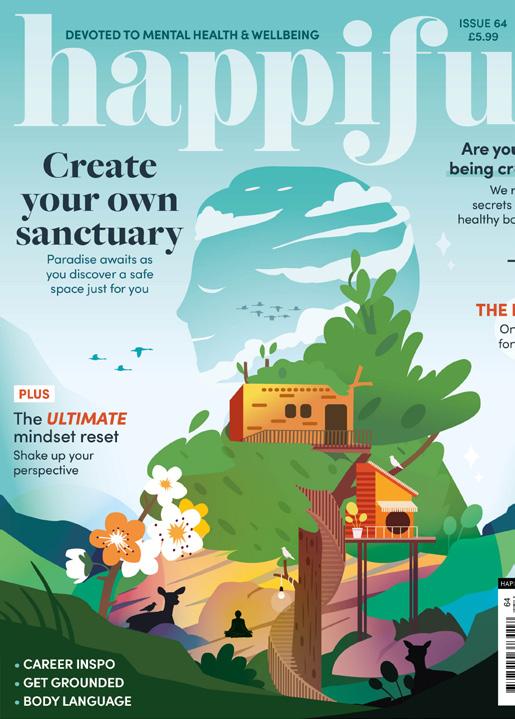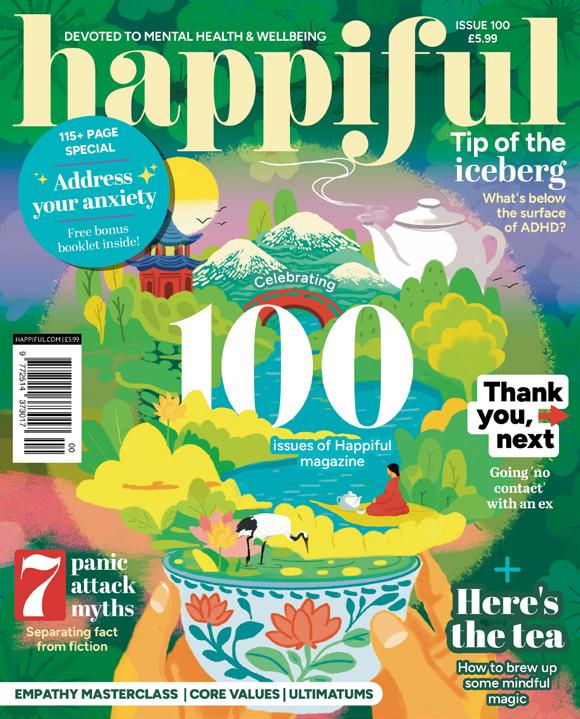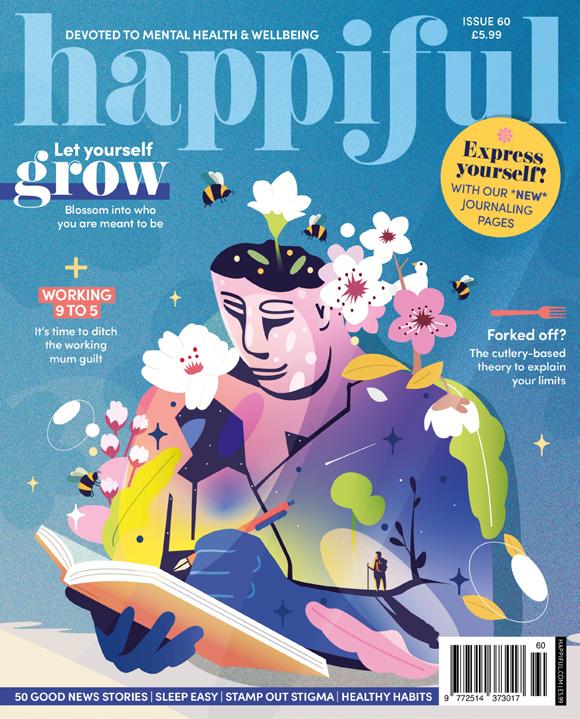
The important thing is not to stop questioning.
Curiosity has its own reason for existence
Albert Einstein

| Andy Vu


The important thing is not to stop questioning.
Curiosity has its own reason for existence
Albert Einstein

| Andy Vu
As one year draws to a close, and the next hovers on the horizon, it’s natural to contemplate our lives, and if we’re living them to the fullest.
Have we achieved what we set out to? Do we actually know what we’re aiming for? Is it even possible to be satisfied with life, when all the responsibilities and pressures can leave us feeling stretched thin, like butter scraped over too much bread?
Between the socially constructed expectations putting your milestones on a deadline, and comparison a mere click away, it’s easy to feel like you’re falling behind. And, in response, exhaust yourself further, trying to attain a true ‘purpose’ you can be proud of.
But the answer here could involve far less work than you tell yourself; in reality, passion and purpose are closely intertwined.
Rather than focusing solely on the end result, or thinking you have to work yourself to the bone to achieve something profound, it’s miraculous what can happen when you let yourself catch your breath (p57).
Pursuing your passions, or homingin on how you enjoy spending your time, might be the secret to recharging your soul. And, from there, your potential is unlimited.
In real terms, slowing things down could actually be the key to making monumental progress.
This issue encompasses that sentiment, showcasing countless ways you can reconnect with what fuels your fire, and nourishes your wellbeing.
From a life coach revealing how (and why) you can release the guilt of taking time for your hobbies (p30), to the surprising and sociable activity that could give your wellbeing a 180 (p42), and the natural remedy being prescribed by doctors (p65), turn a page with our inspiring articles.
Plus, among the noise and pace of the world, it’s important to seek balance – as we highlight in our round-up of 32 uplifting news stories from this year (p11) to leave you feeling hopeful and excited for the days ahead.

As JRR Tolkien wrote in The Fellowship of the Ring: “All we have to decide is what to do with the time that is given us.”
So, ensure you’re spending it well. And that starts with giving yourself permission to follow your heart – you never know where it might lead you.
Happy reading,
REBECCA THAIR | EDITOR-IN-CHIEF

At Happiful, inclusivity, representation, and creating a happier, healthier society are at the forefront of our mission. To find out more about our social and environmental pledges, visit happiful.com/pledges
@happifulhq I | @happiful_magazine T | @happiful_magazine
11 On a positive note
32 intriguing and enlightening stories from this year you might have missed
16 Running on empty
The ‘battery’ analogy giving voice to those with chronic illness
65 Earthly medicine
Could nature prescriptions be the future of healthcare?
73 Universal loss
A closer look at how we process grief as a collective
20 We need to talk
How to approach your partner about going to couples therapy
32 The chatbot effect
Why are so many people turning to AI for companionship – and is it risky?
38 New era of intimacy
A guide to navigating pleasure during menopause
42 On target
Why the benefits of playing darts shouldn’t be overlooked
50 Creative minds
Systems to suit neurodiverse brains
53 Talking triggers
Weighing up whether trigger warnings are truly serving their purpose
57 Just breathe
What science says about breathwork


22 Community corner
Meet the choir who are hitting all the right notes
25 Myths, debunked
Cutting through the noise of unhelpful parenting advice
28 Anxiety on your mind
Vicky opens up about her strategies for a stressful week
30 Ask the experts
Make hobbies your happy place
62 Expert column
Learn how visualisation can rewire your subconscious
78 Michelle Elman
When your ex unexpectedly pops up on socials, read this...

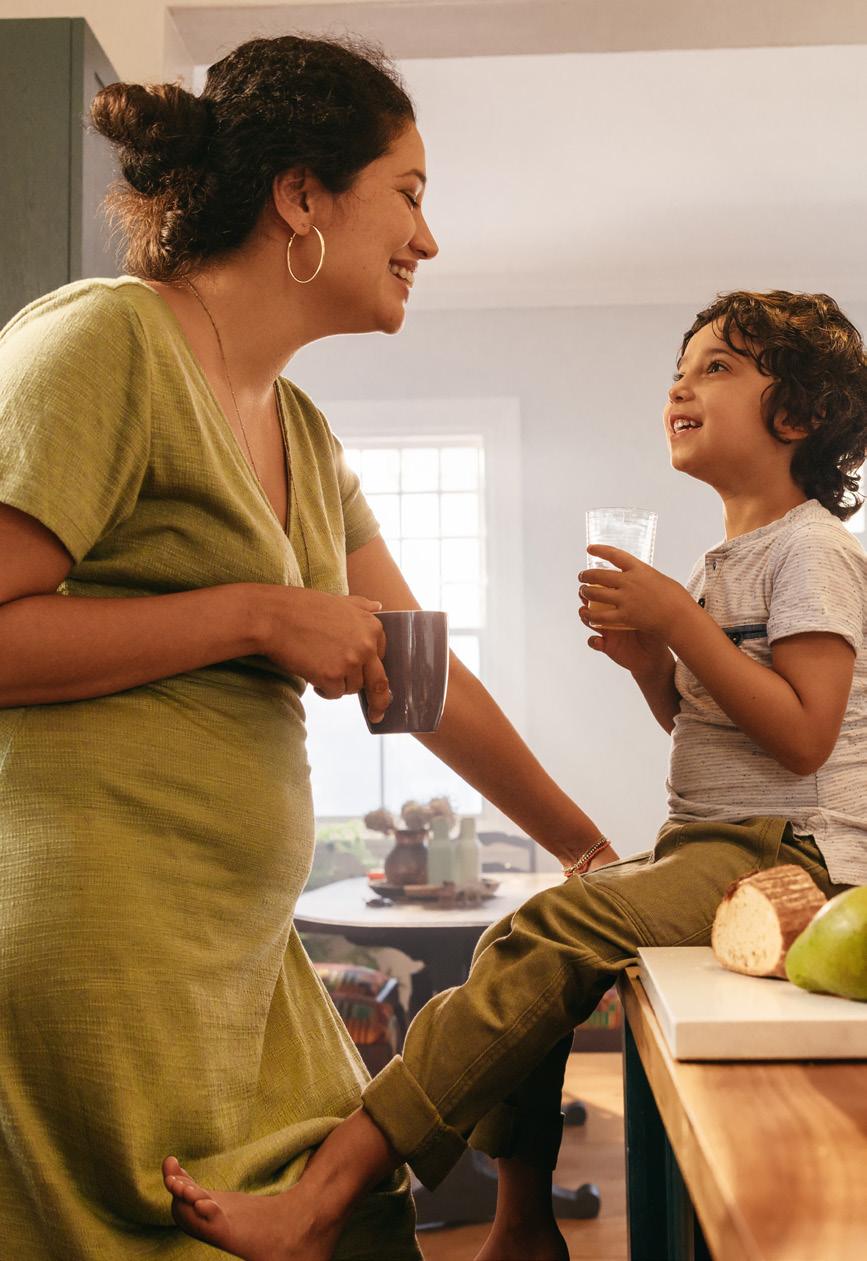
19 Celebrate your wins
40 Find solid ground
Three effective exercises to try when you’re overwhelmed 56 Get puzzling


Note to self 69 Memory menu Six ways your brain processes information
76 Settle scattered thoughts Put the brakes on racing minds
80 Socialising during sobriety
Going booze-free doesn’t need to mean missing out
Latest news 41 Thoughtful reads
48 Responsible recycling
Unpicking the truth about end-of-life textiles
70 Ten things to try
83 Wrap up your year
Take a look back at how far you’ve come, and what’s on the horizon, with our guided journaling pages PRINT EXCLUSIVE
Every issue of Happiful is reviewed by an accredited counsellor, to ensure we deliver the highest quality content while handling topics sensitively.
Today’s world typically demands connecting with technology and working indoors, often at a fast pace. This type of living disconnects us from the natural world – to the detriment of our wellbeing. But when we expose ourselves to the power of nature (p65), we become highly aware of the positive impact that being outdoors can have on our health. Try it for yourself: go outside, connect with yourself, and observe the benefits.

(Accred)
Rav is an integrative counsellor and psychotherapist specialising in spirituality and working with males.


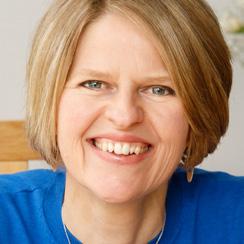

Meet the team of experts providing information, guidance, and insight throughout this issue
JODIE MCCORMACK
FdA MBACP
Jodie is a therapist and supervisor helping women heal after difficult relationships.

SEDEF SALIM
MSc MBACP MNCPS
Sedef is a psychotherapist, clinical supervisor, and trainee counselling psychologist.
EDITORIAL
Rebecca Thair | Editor-in-Chief
Kathryn Wheeler | Features Editor
Fiona Fletcher Reid | Features Editor
Lauren Bromley-Bird | Editorial Assistant
Kat Nicholls | Brand & Integrity Manager
Bonnie Evie Gifford | Content Writer & Editor
Michelle Elman, Chris O’Connor | Columnists
Ellen Lees | Head of Content
Keith Howitt | Sub-Editor
Rav Sekhon | Expert Advisor
ROSALIE COLLINS
BSc MBANT
Rosalie is a Glasgow-based nutritional therapist, specialising in gut health and digestive issues.

KATE HUGHES
Dip ICF
Kate helps people slow down, reconnect, and avoid burnout through mindfulness coaching.
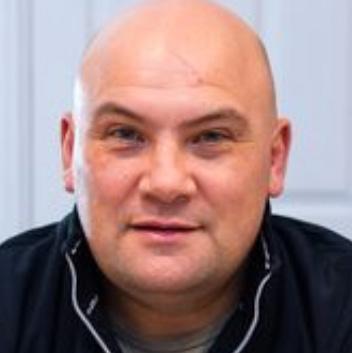
GEORGINA STURMER
BA (Hons) MBACP
Georgina is an integrative counsellor helping clients create a more confident life.
ART & DESIGN
Charlotte Noel | Design & Commerce Manager
Rosan Magar | Illustrator & Videographer
COMMUNICATIONS
Alice Greedus | PR Manager
Isobel Owen | Content Editor
CONTRIBUTORS
CHRIS O’CONNOR
HPD DSFH MAfSFH MNCH (Reg) NCH (Reg)
Chris is an experienced clinical hypnotherapist who has helped hundreds of clients.
SARAH JAMES
BA (Hons) Dip.Couns MBACP
Sarah is a psychotherapeutic counsellor and holistic practitioner.


TINA WRIGHT
BSc (Hons) PGDip CBT Accred. BABCP Tina is a cognitive behavioural psychotherapist specialising in persistent pain.
SONAL JENKINS
BSc (Hons) NT
Sonal is a nutritionist and speaker who runs Synergy Nutrition®.
Maxine Ali, Elizabeth Bennett, Allegra Chapman, Luke Clark, Rosalie Collins, Rebekah Crilly, Jenna Farmer, Vicky Payne, Chris O’Connor Kate Hughes, Samantha Redgrave Hogg, Emma Victoria Stokes, Ruth Ramsay
SPECIAL THANKS
Dr Beth Dawson, Kerri Fleming, Dr Kultar Garcha, Nabila Gardner, Emily Hough, Dan from TCWNN, Jayne Ison, Sarah James, Sonal Jenkins, Dr Amir Khan, Jodie McCormack, Lauren O’Carroll, Georgina Sturmer, Sedef Salim, Dr Kate Wareham, Tina Wright, Jade Zammit
MANAGEMENT
Amy-Jean Burns | Chief Executive Officer Claire Vince | Chief Operations Officer
SUBSCRIPTIONS
For new orders and back orders, visit shop.happiful.com, or call Newsstand on +44 (0)1227 277 248 or email subenquiries@newsstand.co.uk
CONTACT
Happiful, c/o Memiah, Building B, Riverside Way, Camberley, Surrey, GU15 3YL Email us at hello@happiful.com
HAPPIFUL FAMILY
Helping you find the help you need. Counselling Directory, Life Coach Directory, Hypnotherapy Directory, Nutritionist Resource, Therapy Directory
CBP006075

Atlantic salmon have returned to breed in a river in Yorkshire for the first time in 200 years, according to a landmark discovery during a survey in Sheffield by the environmental charity Don Catchment Rivers Trust (DCRT). The fish, once abundant in the river Don, had been declared locally extinct in the 18th and 19th centuries due to overfishing, population pressures, and manmade barriers.
Over the past 35 years, the DCRT has made it their mission to restore the river, and improve salmon migration. Though adult salmon have been spotted swimming upstream since 2019, until now, it had been unclear as to whether they had been breeding successfully.
The charity noted that the appearance of the young salmon,

known as a parr, indicates that the river is now suitable for them to complete their life cycle, which is a sign of environmental recovery.
Speaking of the discovery, Chris Firth MBE, trustee and co-founder of DCRT, says: “For almost my entire life, I had to witness the misery of this once prolific salmon fishery. Its recovery is beyond my wildest expectation – and the
discovery of this salmon parr is the culmination of my life’s work.”
Despite these efforts, there is still plenty of work to be done in the future, such as improving the route from the river to the sea, so that salmon can migrate safely from predators. If you want to become part of history and support your local rivers by volunteering to help the DCRT, visit dcrt.org.uk to find out how to get involved.
Writing | Lauren Bromley-Bird


New research from Syracuse University, New York, has found that weight training can reactivate fast motor neurons that deteriorate with age, potentially preventing falls for the elderly.
The study, published in Medicine & Science in Sports & Exercise, notes that falls are the leading cause of injury for adults aged 65 and older, and that these falls often result in injuries that can be debilitating, and even fatal.
The nerves that control our muscles naturally degrade and become slower as we age. This is called ‘denervation’, which is common for adults in their 70s and 80s, and can lead to an increased risk of falls.
Denervation is especially problematic when there is lack of movement, so researchers specifically looked into the effects of resistance training on nerve conduction velocity (NCV), a measure of how quickly electrical signals travel along a nerve.
With a small study of 48 adults between the ages of 18–84, researchers recorded NCV in the forearm, both before and after four weeks of handgrip resistance training. The results showed that every senior improved their nerve conduction after taking part in weight training.
“When you lose fast neurons, you also lose the fast muscle fibers that are activated by them, and then your power, or the speed at which you can produce force, decreases,” says Jason DeFreitas, who co-led the study with JoCarol Shields. “If you can reactivate those lost neurons, you can produce force faster again, and that has practical implications, so that a slip or a trip doesn’t become a terrible fall.”
Writing | Fiona Fletcher Reid
Smart glasses designed to help people struggling with severe depression is just one of 17 cuttingedge technology projects that will benefit from £3.6 million worth of funding from the UK government. The glasses use artificial intelligence to address the impact that illnesses like depression, anxiety, and psychosis can have on memory loss by recognising household objects, and offering advice via a connected app. The spectacles help to reframe negative thoughts, offer step-bystep instructions for carrying out daily tasks, and communicate
warnings to keep vulnerable users safe. They adapt to the wearer’s needs over time, and help to prevent cognitive decline, including dementia, so complex mental health conditions are less of a barrier to independent living. Businesses across the country have secured similar funding to develop low-cost innovations that aim to improve the lives of people most in need, including those in remote or underserved areas. The funded projects are part of a targeted investment in Extended Reality (XR) technologies, including creative, virtual reality,

augmented reality, mixed reality, haptics (tech that stimulates the senses of touch and motion), and immersive software and audio. Science Minister Lord Vallance says: “These projects are shining examples of how innovation can transform people’s quality of life, by helping those with severe mental health conditions to take on everyday tasks that can otherwise feel impossible.”
Writing | Fiona Fletcher Reid
Imagine the benefits of knowing your health risks years ahead – the changes you could make, and the potential illnesses that could be avoided. Thanks to scientists who have built an artificial intelligence (AI) model that predicts more than 1,000 potential illnesses a full decade in advance, this could soon be possible.
Researchers from the European Molecular Biology Laboratory (EMBL), the German Cancer Research Centre (GCRC), and the University of Copenhagen, created the custom-built generative AI tool, known as Delphi-2M, to forecast changes in health years in advance.
Trained on anonymised data from two large healthcare systems (400,000 participants in the UK Biobank study, and 1.9 million people in the Danish national patient register), Delphi-2M shows how AI can model disease progression on a mass scale. The tool estimates if, and when, someone may develop conditions such as cancer, diabetes, and heart disease. It does so by analysing a patient’s medical history, including previous diagnoses, alongside age, sex, and lifestyle factors, as well as if they smoke, drink alcohol, or are obese. It then calculates health risks over time.
One of its advantages is its ability to consider many conditions simultaneously over long periods. According to EMBL interim executive director Ewan Birney, patients could benefit from the technology within a few years. Professor Moritz Gerstung, head of the division of AI in oncology at the GCRC, says: “This is the beginning of a new way to understand human health and disease progression.”
Concerns about privacy, bias, and over-reliance on AI remain topics of discussion, but the study highlights the potential for tech as a force for good. Writing | Bonnie Evie Gifford
From the uplifting and inspiring, to the intiguing and groundbreaking, here are 32 stories from 2025 you might have missed...
Writing | Rebecca Thair
Despite the destruction caused, it’s often hard to prove the exact impact of large-scale pollutionists. However, in April, a study, in the journal Nature, saw researchers provide a scientific framework to hold fossil fuel companies accountable for their individual emissions, and could specifically help to recoup costs of the impact of extreme weather resulting from climate change.
The study’s first author, Christopher Callahan, says: “Our findings demonstrate that it is, in fact, possible to compare the world as it is to a world absent individual emitters.”
IN JANUARY, SIR STEPHEN FRY MADE HISTORY BY WINNING £250,000 FOR CHARITY MIND ON THE CELEBRITY EDITION OF WHO WANTS TO BE A MILLIONAIRE? – SETTING A NEW RECORD FOR THE LARGEST CELEBRITY PRIZE WON SINCE THE SHOW RELAUNCHED!
California has become the latest (and largest) state to officially ban cat declawing in the US, in what’s considered a historic win for animal welfare.
Singing classes are an effective (and cost-effective) treatment for postnatal depression, according to a three-year study from King’s College London. The research, in the British Journal of Psychiatry, found that a specially designed group singing intervention, Breathe Melodies for Mums, saw symptoms continue to reduce for mothers six months after the course. And while classes wouldn’t replace traditional treatments, they could offer a powerful complementary, and accessible, option.
Denmark is giving its citizens stronger protections against deepfakes, by changing copyright law to give individual’s the ‘unequivocal’ rights to their own body, facial features, and voice.
Danish culture minister, Jakob Engel-Schmidt, says: “Human beings can be run through the digital copy machine and be misused for all sorts of purposes, and I’m not willing to accept that.” While the change won’t affect parodies or satire, once approved, it’s believed people will have the right to demand sites remove content that features them without their consent.
Research, published in the Lancet Public Health, reveals 7,000 steps a day is enough to see a significant reduction in health risks – taking some pressure off those struggling to meet the elusive 10,000 benchmark previously quoted.
Huntington’s disease has been treated successfully for the first time in history. Affecting around 75,000 people in the UK, US, and Europe, the hereditary condition sees a gene mutation cause proteins needed in the brain to decay over time. Now, a gene therapy trial by University College London reports slowing progression of the disease by 75%, which could result in adding not just decades on to people’s lives, but significantly improving the quality of them.
Songs are getting shorter, according to Chartmetric’s 2024 Year in Music Report, which revealed that the average length of a song charting on Spotify is now three minutes – 30 seconds shorter than in 2019. It’s believed that platforms such as TikTok, with it’s audio snippets, and reduced attention spans, are playing into this trend, along with the improvements in accessibility for people to record their own music. Plus, with Spotify counting 30 seconds as a full pay, tech is potentially incentivising shorter running times for artists to get repeat plays. So, are you a fan of the quick chorus, or clamouring for more value in verses, and a bonus bridge?
Nearly a century after she died mere weeks before handing in her thesus, Mākereti Papakura (believed to be the first indigenous Maori woman to study at Oxford University), has been honoured with a posthumous degree.
In a move to support the arts, the Irish government has announced its scheme to ensure basic income for creative workers will become permanent in 2026, providing 2,000 artists with €325 a week for three years.
GLOBAL INVESTMENT IN GREEN ENERGY WAS UP 10% YEAR-ON-YEAR IN THE FIRST HALF OF 2025, THINKTANK ZERO CARBON ANALYTICS REPORTS
LEBRON JAMES BECAME THE FIRST PROFESSIONAL MALE ATHLETE TO HAVE A KEN DOLL MODELLED ON HIM, AS PART OF THE BARBIE UNIVERSE’S AIM TO DIVERSIFY ITS DOLLS.
The secondhand clothing market is booming, expanding at about 2.7 times the rate of the general retail market, with ThredUp’s annual Resale 2025 report predicting it will reach £275 billion by 2029.
After historic droughts saw severe wildfires impact the region last year, Brazil recorded a 65% reduction in burning in the Amazon rainforest in 2025 – the lowest since monitoring began. It’s believed this drop is thanks to a combination of healthy rainfall, and careful work by the local communities.

From April to August, a public art project of an unprecented scale saw life-size animal puppets take a 20,000km journey from the Congo Basin to the Arctic Circle, to highlight the impact on climate change on the displacement of animals.
‘The Herds’ (which included giraffes, antelopes, lions, and elephant puppets made from recycled materials, such as cardboard and plywood) captivated audiences in the streets, while bringing attention to the climate crisis by reflecting the migration of animals fleeing disaster.

Wicken Fen, in Cambridgeshire, has made history as the first UK nature reserve to host 10,000 species
The two medieval towers of the Notre-Dame Cathedral, in Paris, have reopened to the public, six years after a fire tore through the landmark

In June, EU lawmakers voted in favour of banning airlines from charging passengers for hand luggage (up to 7kg)
There’s been a 27% decline in people smoking across the globe since 2010, the World Health Organisation reports
Scientists in South Korea have developed a liquid robot that aims to replicate the ability of natural cells to divide, fuse, deform, and capture other substances. The research, published in Science Advances, highlights how the ‘soft robot’ is comparable to a water droplet, able to recover it’s form without breaking. It’s thought these characteristics mean it could be used for targeted drug delivery inside the human body, but also has the potential to be developed further thanks to it being able to pass through narrow spaces – such as being used in disaster areas to support exploration, cleaning, and supplying nutrients.
An amendment to the General Wildlife Law has been unanimously approved by the Mexican senate, banning the use of marine mammals in captive entertainment, along with prohibiting captive breeding, or keeping of them for any purpose other than scientific research for conservation.
Mitch Hutchcraft, an ex-Royal Marine from Cambridgeshire, completed a gruelling 240-day triathlon in May. The 31-year-old raised money for charity SAVSIM (which uses animals and nature to provide mental health support to military vets), by swimming the 35km of the Channel from Dover, cycling about 12,000km from Europe to Digha in India, and then running 900km to Kathmandu in Nepal. He continued by trekking 360km to Everest basecamp, before scaling the mountain.
Engineers from Northwestern University, in Illinois, USA, created the world’s smallest pacemaker, which can be non-invasively injected into the body via a syringe. While it can work on hearts of any size, it’s particularly suited to newborns with congenital heart defects, and dissolves when no longer needed.
Some wear a gym kit! Javeno McLean is a personal trainer who recently won a Pride of Britain Award for his efforts to create inclusive workout spaces. He provides free sessions for hundreds of people each year –including those who are elderly, disabled, or ill, such as cancer patients, stroke survivors, and those with dementia – at his specially-equipped gym in Manchester. Judges said: “Javeno’s positivity and power to motivate just shine through in everything he does. He is genuinely changing lives, and inspiring millions.”
Whether you’re partial to a deep-pan or prefer a stone-baked thin crust, we have good news for pizza lovers. A study from the University of East Anglia has found that the smell of freshly baked pizza isn’t just a cause for salivating, but actively works to reduce stress and boost your mood. But, even if you’re not a fan of the food, the research suggests other familiar, comforting smells could still help to improve mood by up to 40%!
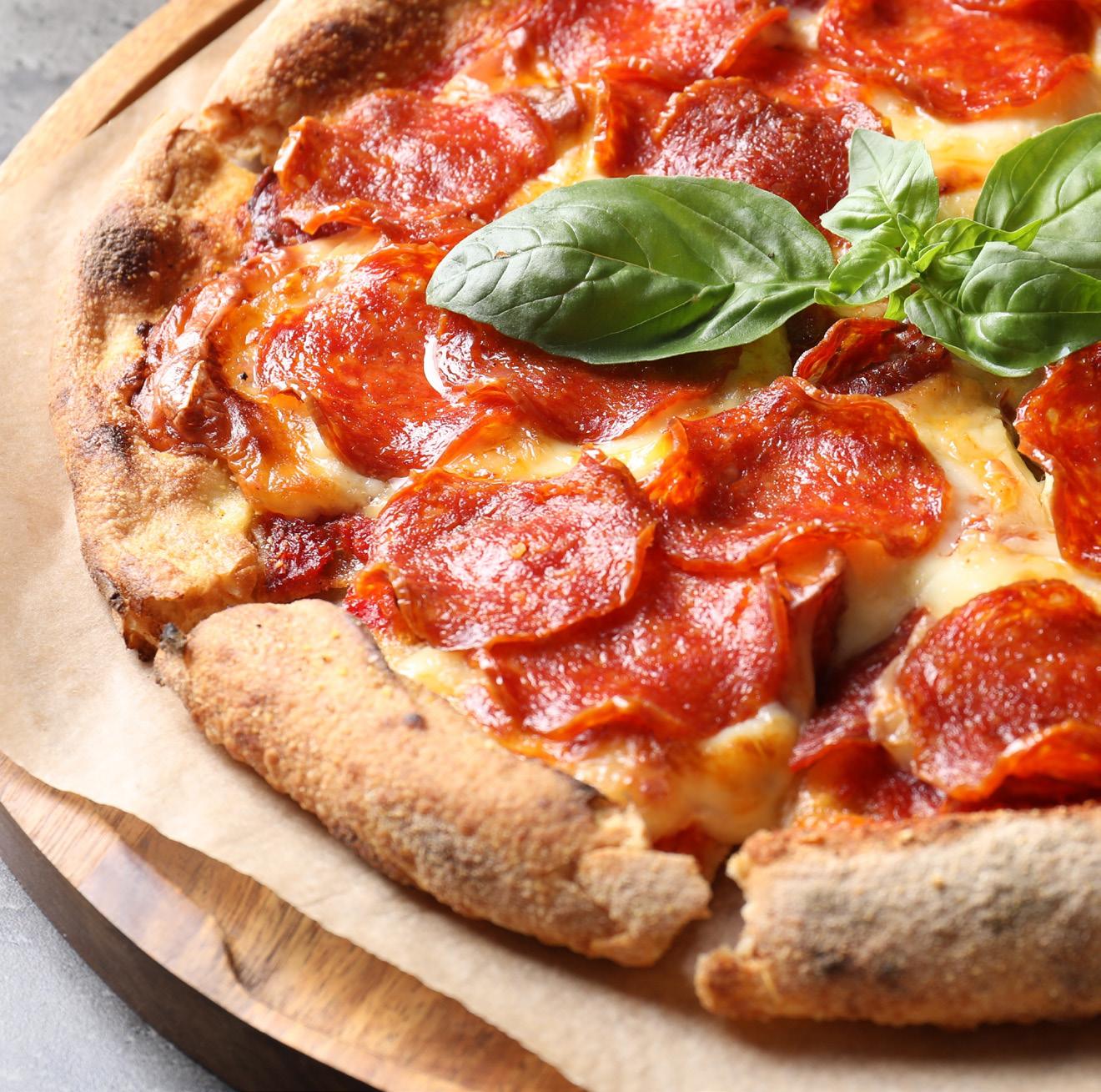
An overhaul of Scotland’s justice system is set to see the controversial ‘not proven’ verdict scrapped. The third verdict option has been unique to Scottish courts, and effectively sees the same result as ‘not guilty’, with the accused being acquitted. However, it’s believed that the ambiguity around being ‘not proven’ could be more traumatising for victims, and prepetuates stigma for the accused.
With concrete being the most used material on the planet (after water), scientists from Texas A&M University have developed a fully sustainable way for concrete to ‘heal’ its cracks itself, using synthetic lichen – improving on existing bacteria methods that aren’t fully autonomous.
Installing safety nets on the Golden Gate Bridge, in San Francisco, saw a 73% reduction in suicides in 12 months. Researchers reviewed the impact of these measures, along with that of training staff and volunteers to intervene when someone is showing signs of a suicidal crisis, and published findings in the journal Injury Prevention.
Time Out has revealed the ‘coolest neighbourhoods in the world’, with Jimbocho (Tokyo) putting the country on the map in the top spot. The top five are rounded out by Borgerhout (Antwerp), Barra Funda (Sao Paulo), Camberwell (London), and Avondale (Chicago). Travel itinery, sorted!
Ed Sheeran launched a foundation to support music education in the UK, with the aim of improving access to music for 12,000+ youngsters. It will provide instruments, create performance opportunities, and hopefully open pathways into the industry, as well as advocate for greater recognition of music’s “transformative power”, along with the “essential” role of music teachers. A NEW BILL IN CALIFORNIA WILL DEFINE, AND THEN BAN, ULTRAPROCESSED FOODS FROM SCHOOL DINNERS. THIS IS BELIEVED TO BE THE FIRST STATUTORY DEFINITION OF UPFS IN THE WORLD.
Microsoft founder Bill Gates announced that he will give away 99% of his fortune (expected to reach £150 billion) by 2045, through his foundation, primarily focused on improving health and education services in Africa, over the next 20 years.
Looking for opportunities to grow
Finding tools to help yourself thrive
Trying to be the best version of yourself
Focusing on what’s in your control
Knowing that ‘giving your all’ looks different each day
Taking things one step at a time
Showing yourself compassion
Being proud of how far you’ve come
Having a support network to rely on
We
explore the ‘broken battery’ analogy, and how it can be a helpful way of conceptualising what it’s like to live with chronic illness
Writing | Fiona Fletcher Reid
Experiencing a bout of sickness can inevitably put your life on hold. Whether you’re sneezing on the sofa or healing a broken bone, more often than not, the pain and inconvenience of ill-health gradually becomes a distant memory, allowing normal life to resume.
But chronic illness – a longterm health condition that may not have a cure, and requires ongoing management via medication and/or other therapies – is a constant presence for those with conditions like fibromyalgia, epilepsy, asthma, autoimmune diseases, chronic pain, and arthritis.
Instead of a typical illness that you would hope gets better over time, chronic illness symptoms are more unpredictable, often flaring up unexpectedly, or as a result of specific triggers – which could range from psychological stress to a change in the weather.
And with a 2024 report by charity the Health Foundation predicting that 9.1 million adults in England will have a diagnosed major illness by 2040, it’s a struggle faced by many.
One of the major obstacles to living with chronic illness is that it is often invisible, or at least imperceptible, to the average onlooker, making communicating symptoms tricky. Yet, a 2023 data analysis, published in Qualitative Research in Medicine & Healthcare, found that language tools, such as metaphors, allow patients to explain their symptoms more effectively to medical professionals.
Created by Christine Miserandino, ‘spoon theory’ is a widely-adopted way of explaining how much energy someone with chronic illness has throughout the day, which can fluctuate greatly for each person.
The idea is that ‘healthy’ people have the energy they need to get dressed, go to work, cook dinner, etc., and that energy is represented by a number of spoons. For every task carried out, a spoon disappears. The theory goes that most people never have to consider how many spoons they have for the day ahead, yet those with chronic illness have far fewer spoons (as well as a change in this starting number on any given day), so are constantly evaluating how best to use the little energy they do have – and once those spoons are gone, they’re gone. It’s become a popular theory among the chronic illness community, but some people find that it oversimplifies their experience, or doesn’t accurately capture their changing energy levels and symptoms.
An alternative term that some people feel more aligned with is the ‘broken battery’ analogy.
For many people this model is the first step towards acceptance
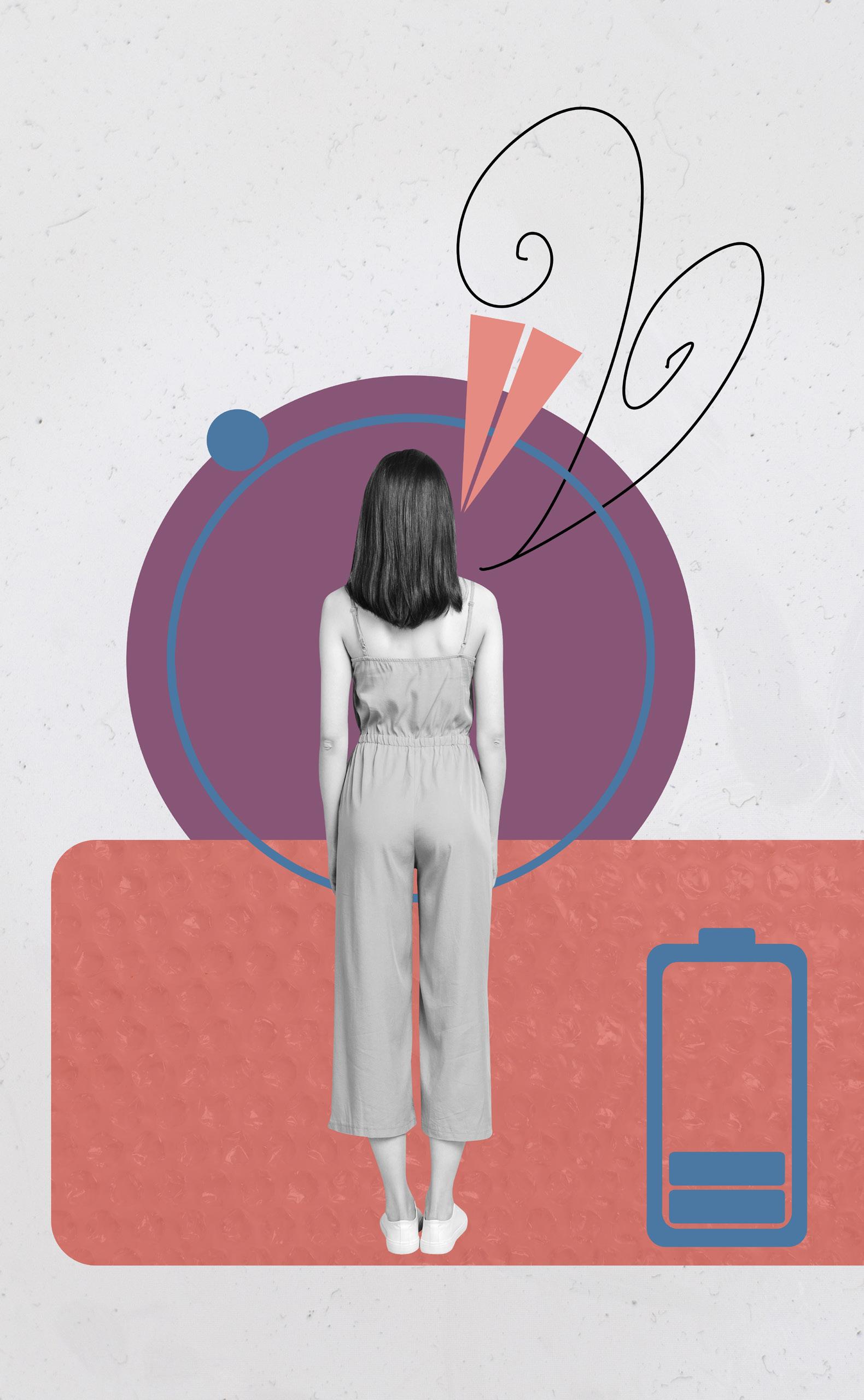
The best way to explain this is to think about the battery in a mobile phone. When the battery is functioning optimally, you can recharge it quickly, and rely on it to power your phone for an entire day, where you can stream music, make video calls, and text as often as you like. But when the battery is faulty, or nearing the end of its life, it takes twice as long to charge, or never reaches 100%, and is almost empty by lunch time.
One of the reasons that people prefer this analogy is because spoon theory suggests that after using all your ‘spoons’ during the day, they replenish themselves overnight. “The broken battery shows the reality that recovery is not always straightforward,” explains Tina Wright, who is a cognitive behavioural psychotherapist specialising in persistent pain. “Sometimes it takes longer, and when stress or illness is present, the recharge is less effective.”
Additionally, some say that it more effectively captures the unpredictability that people with chronic illness experience in terms of energy depletion. In the same way that a faulty battery may cut out unexpectedly, someone with chronic illness can think they have the energy for >>>
particular a task, and then hit a wall out of nowhere.
It also helps to demonstrate how some activities require more effort than others. “Just as different apps on a phone drain power at different rates, so too do exercise, work, relationships, or even worrying,” says Tina. “This makes the analogy very relatable, and it helps people see that fluctuating energy is not their fault, but part of how their body now works.”
One of the challenges with chronic illness is the loss of identity. “Many people say, ‘I don’t recognise myself anymore.’
Chronic pain can take away roles, hobbies, or work that once defined them,” says Tina.
According to one 2020 study, published in the journal Sage Open Medicine, sadness, worry, and despair, are common emotions for those with chronic illness, often as a result of the stress of coping with circumstances, or not being able to fulfil their expectations in life. This disconnect between past and present capabilities, can come with layers of grief, sadness, and anxiety, but with the help of analogies like the broken battery, people can come to terms with their symptoms, and find new ways to cope.
On a psychological level, having a visual representation of a broken battery can be a
relief, because it makes the invisible visible. Tina notes that over time, people can go from feeling frustrated and angry at themselves to accepting their new normal: “That change in mindset reduces self-blame and helps people make kinder choices.”
It helps on a practical level, too, allowing them to look for patterns around what activities are particularly draining. “A physical workout, a stressful conversation, or an afternoon of concentration, all draw from the same source,” says Tina, “and understanding this makes it easier to plan, to explain their needs to others, and let go of guilt. For many people, this model is the first step towards acceptance, and building a more balanced and compassionate way of living with their condition.”
But, just like spoon theory, not everyone identifies with the broken battery analogy.
Understandably, the term ‘broken’ can feel stigmatising, or suggest that you are damaged in some way – which is, of course, not true. It also focuses mainly on energy levels, without considering other facets of chronic illness, such as aches and pain, brain fog, sensory issues, or mobility problems.
Whether you identify as a ‘spoonie’, or resonate more with the broken battery analogy, the important thing to remember is that there is support available.

In terms of energy levels, Tina suggests ensuring that while we may have to prioritise work tasks, household chores, and rest, we mustn’t forget to make time for fun as well.
“Work means your responsibilities and the things that need to be done, whether that is paid employment or household tasks. Rest is about genuine recovery for body and mind, through sleep, relaxation, or quiet time. Play is just as important. It means the things that bring enjoyment, creativity, and connection.”
She also encourages people to keep tasks small and frequent, and to leave space each day for flexibility. “Some days you will manage more, and other days less, and that is part of learning how to live with a chronic condition. What matters is that you make space for all three parts of the structure, so life is not just about chores and recovery. Over time, this creates a routine that feels balanced, sustainable, and kinder, both physically and emotionally.”
Halt hustle culture in its tracks by intentionally acknowledging all the little steps you take
Writing | Fiona Fletcher Reid
Most of us are pretty good at celebrating our big wins: moving house, getting married, or passing a driving test. But what about all the small wins along the way? The truth is that life is made up of little moments; long-term goals are achieved in bitesize chunks, and taking note of these wins can keep you motivated. So, here are five ways to acknowledge and celebrate your wins, no matter the size.
When you achieve a small win, it can be tempting to simply crack on with the next task on your to-do list, or downplay the progress you’ve made. Instead, practise intentionally pausing and slowing down after your small win. This gives your brain time to absorb what you’ve accomplished, reinforcing the positive feelings, and reminding you that progress, however small, still counts.
Expressing gratitude comes with many benefits, from stress relief to improved sleep. Make the most
of this by writing a letter, email, or text message to someone who has helped you achieve your small win. This could be a loved one, mentor, or even your past self, and really reinforces the importance of these mini-milestones.
Take a photo, write a poem, or record a voice note about how you feel when you reach your milestone. These snapshots become reminders on harder days, and act as proof that progress is happening. Over time, you’ll build a collection of moments that show just how far you’ve come.
Sometimes, the things that we count as successes worth shouting about aren’t necessarily recognised by society, or everyone in our circle, but don’t let that discourage you from celebrating yours with the folks who really do get it. Whether it’s speaking up in a GP appointment or finally picking up your dry cleaning, text that one friend who understands the significance of your win, and bask in the glory!
If you’re working on smaller steps to achieve a long-term goal, tracking your progress step-by-step can be an excellent way to stay motivated. Say you are training for a marathon, for example, which takes a considerable amount of planning, commitment, and requires running multiple times a week. Write down the date and details of every run on a whiteboard, or large sheet of paper on your wall. You could even buy some running themed stickers and get the thrill of popping one on your win wall after every run!
Need some inspiration? Here are a handful of little wins to take note of:
• Getting up 15 minutes early to meditate before breakfast
• Cooking instead of ordering in
• Hitting your movement goal
• Upholding a personal boundary
• Opening up to a friend instead of bottling things up
• Doing a household chore you’ve been putting off
• Making an appointment you’ve been avoiding
Trusting a professional to oversee the exploration of your relationship can make you feel extremely vulnerable – but there are a wealth of benefits to devoting time to nurturing your connection. So, here are seven useful tips on approaching the counselling conversation with your partner
Writing | Elizabeth Bennett
Couples counselling can be a hugely beneficial experience, whether it’s to improve communication, resolve roadblocks, or gain a deeper understanding of your relationship dynamic – all with the help of an impartial sounding board. However, despite the plethora of benefits, there is still some stigma around couples counselling, and asking your partner to go on this journey can sometimes be a difficult conversation to navigate. But, having the tools to approach this, such as understanding how to phrase it in the right way, in the right setting, can turn inviting your other half to take this step with you from an intimidating idea into a productive pursuit.
Get
We all have different reasons why we might think couples counselling is an important step for our relationship. However, before you go ahead and ask your partner, it’s important to set aside some time to identify exactly what it is that is driving you to do this.
“You need to be clear on how you’re feeling, and why it’s important to you, so you can get this across to your partner,” counsellor Jodie McCormack explains. It is likely your partner will have some questions, and potentially show resistance initially, so having that clarity on why you are suggesting counselling means you are prepared for this.
While you may have been thinking about the topic of counselling for a while, it’s good to keep in mind that, for your partner, this might be something they have never considered. Whether they don’t feel the relationship is one that could benefit from counselling, or they are resistant to the practice more generally, there are a number of reasons they might not give the response you are initially hoping for.
“They may need some time to consider their own thoughts and feelings before they can offer
you an answer,” says Jodie. “Let them know that there isn’t any rush, and perhaps agree on a time to continue the conversation later, if needed.”
Subsequently, it is crucial to pick your moment wisely when approaching this topic for the first time. “Bring this up in a calm environment where you both have space and time to speak freely. It’s no good mentioning it as you’re heading out the door to work, or drifting off to sleep, as neither of you will have time to unpack the emotional suitcase you’ve opened up,” Jodie says.
When explaining your reasoning, try not to blame your partner. Chances are, your partner might feel a little defensive at the initial suggestion, so you want to avoid anything that could increase this reaction. Also, blaming will cause more conflict than resolution, and is unlikely to create the desired outcome. “Instead, be prepared to listen, and consider the role

you both play in the relationship. This helps to take away any blame, which, in turn, reduces the chance of defensiveness,” Jodie advises.
When thinking ahead about how the conversation might go, it’s handy to have some phrases in mind that can help your partner see the benefit of attending counselling together. Jodie suggests trying phrases such as:
• “I really value our relationship, and would like us to invest more time into it.”
• “I’ve noticed that lately we’ve been a little disconnected, and I think couples counselling could help us to reconnect.”
• “I want to explore ways we can help our relationship, and I think couples counselling could help us with that.”
Sometimes, when navigating the topic of counselling for the first time, the conversation might head in the wrong direction. It’s best to try to catch this before things escalate further. “If you’re not in
agreement, and you notice either of you are becoming irritated, or things are becoming heated, take a breath, share that you need to pause the conversation, and agree on a good time to return to it,” suggests Jodie.
It’s vital to remember that we can’t force our partner to do anything they don’t want to do. It can be frustrating when we feel that we can see a way forward, and our partner doesn’t, but we have to accept their decision. If this is the case, Jodie suggests one positive step could be to find individual counselling for yourself first.
“This could be beneficial for you, because this can help you
to create healthier boundaries, improve communication and resolve conflicts,” says Jodie. As a consequence, if your partner sees the benefits of counselling in action, they may be more open to exploring it together.

Jodie McCormack is a therapist and supervisor, helping women heal and build confidence after difficult relationships. Connect with her via the Counselling Directory.
We’re putting community initiatives in the spotlight, and, in this issue, we’re highlighting the national choir striking a chord with those experiencing homelessness
When Marie Benton first moved to London in 2008, joining a choir helped her find her feet. Working as a senior project worker at homeless accommodation provider St Mungo’s at the time, she had the dream of starting a choir to provide comfort and confidence-building to those going through a tough time. Inspired, she hung posters in local hostels advertising a ‘choir with no name (yet)’ – and it hit the right note. The Choir with No Name (TCWNN) was officially born.
The organisation now boasts seven choirs across multiple cities – including Birmingham, Cardiff, and Liverpool – providing singing communities for people impacted by homelessness and marginalisation.
The link between homelessness and mental illness has been widely documented. Sadly, the 2022 Unhealthy State of Homelessness report revealed that people going through homelessness experience worse physical and mental health than the general population, and that 45% report self-medicating with drugs or alcohol.
Clearly, the challenges facing people experiencing homelessness extend beyond finding shelter. But research published in Psychology of Music, back in 2012, found that those experiencing chronic mental health problems, physical disabilities, and intellectual disabilities, who joined a choir reported more positive emotions, better emotional regulation, and improvements in self-perception, social functioning, and even employment capacity following their participation.
TCWNN has even conducted its own research, and according to its most recent annual member survey, 88% saw mental health improvements and 78% reported reduced stress and anxiety.
But getting people through the door can be a struggle, with people experiencing homelessness among some of the most isolated in our communities. “Frequently excluded and often ignored, our choirs aim to be the opposite of that experience, where everyone is seen and heard, and where they can leave their troubles at the door and have fun!” says TCWNN’s chief executive Dr Kate Wareham.
Unlike other singing groups, there’s no fee to join in TCWNN, and no need to register beforehand, take part in an audition, or commit to showing up on a regular basis. All rehearsals start with a cuppa and a chat, where new members are greeted at the door, and shown the ropes by other members and a choir manager. Then, everyone sings together for 90 minutes, and enjoys a hot meal at the end of rehearsal.
“Many members have experienced trauma, and struggle with low self-esteem, difficulty with social interactions, and lack of trust in institutions,” explains Dr Wareham, “so we work hard to ensure that rehearsals are welcoming, trauma-informed spaces, where everyone has a place where they feel safe.”
The inclusive nature of TCWNN is clear – it welcomes adults of all ages, genders, sexualities, ethnicities, religions, and musical abilities. Members who take part often have experience of mental and physical health challenges, addictions, or physical and learning disabilities, while some singers may be survivors of domestic violence, have experience of being in care
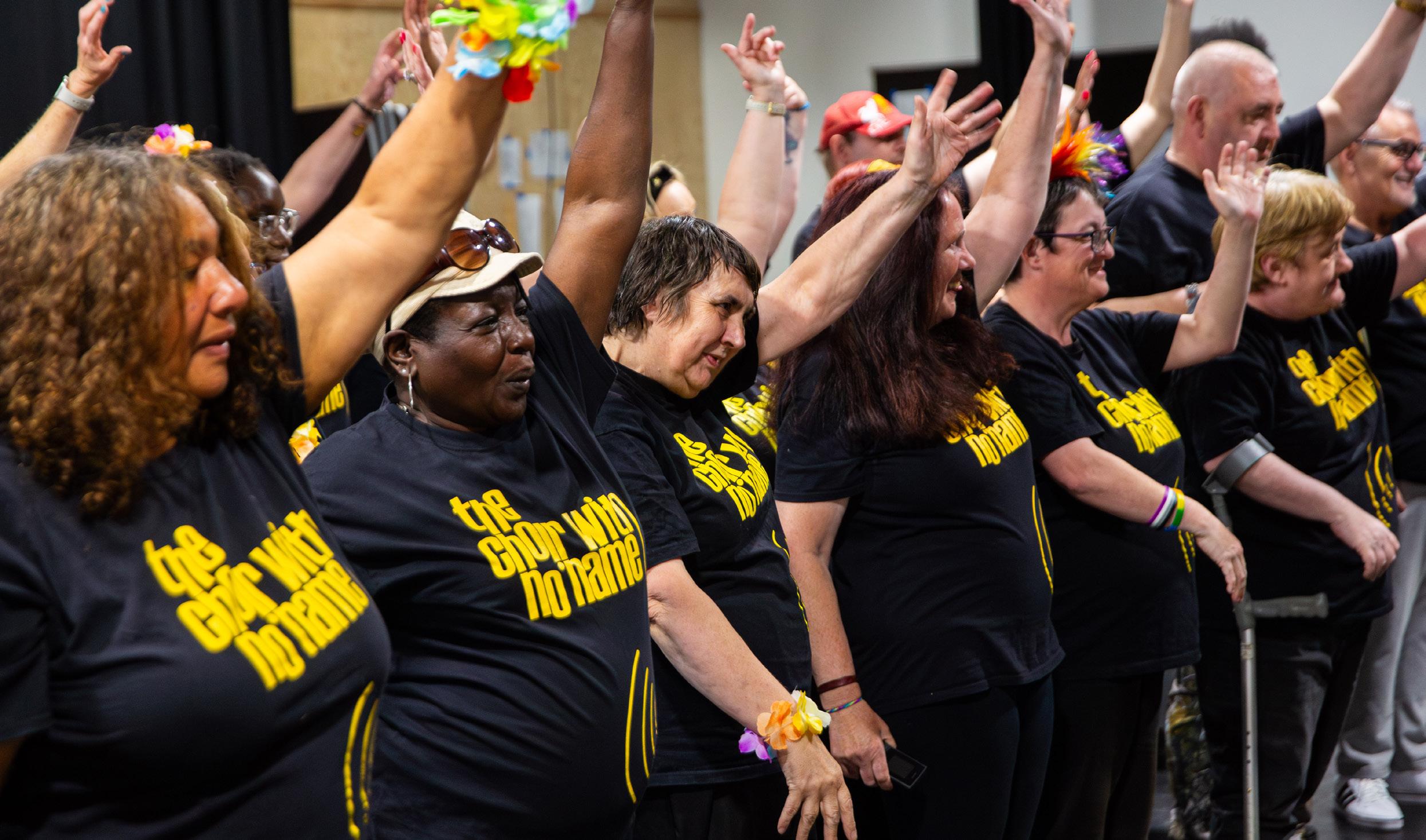
or prison systems, or be asylum seekers and refugees.
Not only is everyone welcome, but they also benefit from support that they may not find elsewhere.
“Our choir directors are experts in teaching group singing in a way that ensures everyone, regardless of whether they think they can sing or not, is supported to flourish, both personally and musically,” says Dr Wareham.
“They will work with those who are less confident or experienced to help them find their voice, encouraging good singing practice, and even encourage them to take the leap and sing a solo.”
Dan, who has been singing in the Liverpool choir since 2015, says his life has been transformed. In the early days, he was living in a hostel after being evicted from his family home. “At that point, I had retracted inside myself, wrapping myself in
bubble wrap as a way of guarding against the world,” he explains.
But weekly choir rehearsals offered a routine among the chaos, which provided hope during dark times. “If my life was a ladder, at the time I joined choir I was on the very bottom rung, [...] so coming to choir was the start of me climbing up that ladder, and, slowly but surely, I got to where I am today – a confident, outgoing, silly person!”
Now, Dan has his own flat, is beginning to rebuild family relationships, and enjoys the thrill of performing solo on stage at the many TCWNN performances that take place throughout the year.
As Dr Wareham reminds us: “At our choirs, it is as much about giving it a go as it is hitting all the notes, so everyone has the opportunity to shine and show the world their talents. You never know, you might even surprise yourself!”

The Choir With No Name is a charity, and relies on donations to continue providing not just music, but community, hot meals, and hope to those who need it most. To support its work, or attend one of its upcoming performances, visit choirwithnoname.org

The pain of parting is nothing to the joy of meeting again
Charles
Dickens

From the idea that you should enjoy every minute to the ‘approved timeline’ to tick off sleep training, there are many myths about parenting that create unrealistic expectations and undue pressure. So, it’s time to reframe the narrative to give a more authentic picture…
Writing | Jenna Farmer
Becoming a parent or guardian is a role that can redefine you, but that doesn’t mean it always follows a set script. As a mum of one, I know how easy it is to judge ourselves and our experiences based on the stories shared about how to be the ‘perfect parent’, but this is a narrative that’s often crafted from misconceptions and idealised scenarios. When we read between the lines, the truth can look a little different to the fiction we’re told.
Myth 1: You should enjoy every minute of parenting – it goes so fast
While the saying ‘It goes so fast!’ does hold some truth – with certain days feeling like you’ve blinked and your child has gone from a toddler tentatively taking their first steps, to a fully-grown child running around carefree
Myth 2: Your baby should sleep through the night
The age-old battle of getting a young child to sleep – is there anything more stressful? Perhaps you read that your baby ‘should’ be a perfect 7pm–7am by now, or heard comments from acquaintances about their child resting undisturbed by your one’s age, so you worry you’re doing something wrong. The truth is that every baby is different, and lots of young children find it hard to settle.
“These expectations can be really detrimental to parents’ mental health,” says child sleep consultant Jade Zammit of beyondthestars.co.uk.
“Comparison is one of the worst things we can do when it comes to your baby’s sleep. There are so many reasons why some babies wake more frequently; some babies have low sleep needs, and others have high sleep needs,
– telling parents to enjoy every minute is not actually helpful. Like anything in life, there are good and bad days when raising youngsters, and I’m yet to meet this mythical parent who enjoys every single second of it. There’s no denying (and it’s OK to say) that while parenting is often rewarding, it can also be hard. In fact, one 2025 survey from the British Association for Counselling and Psychotherapy (BACP) found that 59% of therapists have seen an increase in parents seeking support as they’re struggling to cope, so if you’re feeling like this, you’re far from alone. Admitting when you’re struggling, or having a bad day (or week, or month), is a positive step in getting the support you need. Persisting with a narrative that excludes recognition of the challenges parents face can create even more pressure to uphold impossible standards – and that isn’t good for anyone. >>>
and some are really sensitive to sleep pressure. There could even be developmental factors and reflux. It’s biologically normal – my biggest piece of advice is stay in your own lane, and consider your own baby’s needs. Their sleep (or lack of!) is not a reflection of you as a parent, or them as a baby.”
Myth 3: Don’t ‘make a rod for your own back’ This common idiom – which implies you’re behaving in a way that is going to make life more difficult for yourself in the future – is wheeled out at every possibility in the early stages of parenting. Whether that’s supposedly holding your baby too much, rocking them to sleep, or picking them up when they cry, there will definitely be someone declaring you’re ‘making a rod for your own back’. The truth? There’s no 100% foolproof handbook to raising a child. You know your baby best, and what works for you – and you’re doing the best you can for them.
Myth 4: A good parent never shouts I’m not saying that shouting as a parent is a good thing, but raising your voice once in a while doesn’t automatically make you a bad parent either. The responsibility of bringing up a child, and entering that unknown territory, can test anyone, so know that it’s human to feel overwhelmed or frustrated at times.
A good parent is able to recognise that they won’t always deal with a situation correctly –

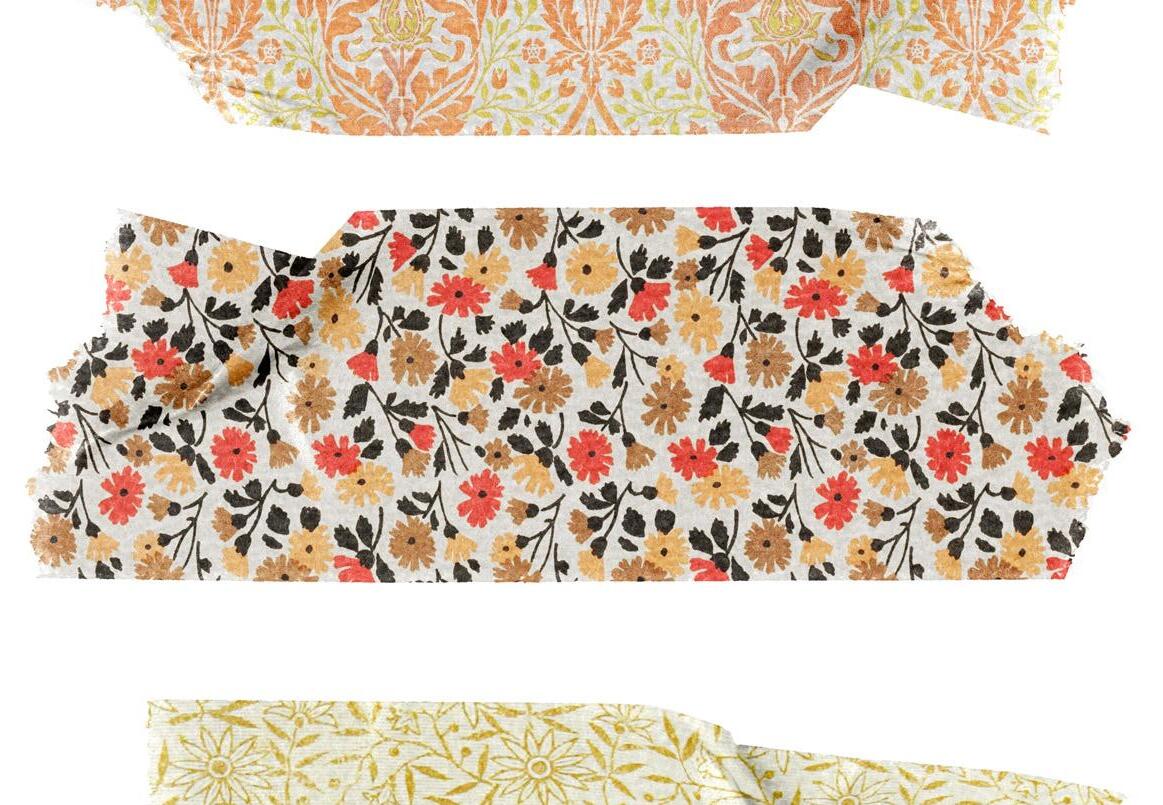

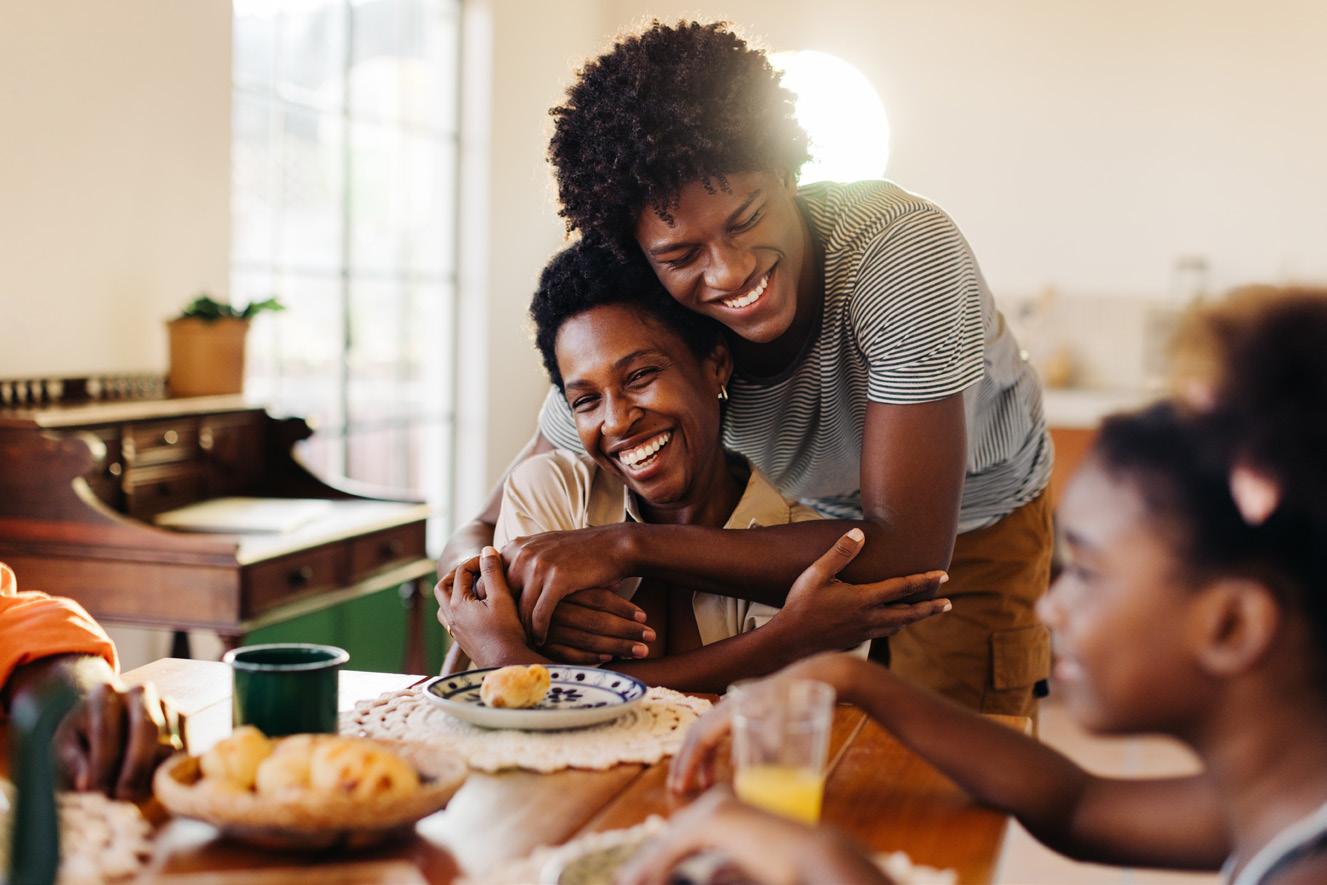


A good parent is able to recognise that they won’t always deal with a situation correctly
but rather than beating themself up, looks to see what they can learn, and how they can make a difference in the future to stop repeating the cycle.
“The idea that a ‘good parent never shouts’ sets parents up to fail – especially if we’re neurodivergent ourselves, or raising kids who are,” says Lauren O’Carroll, peaceful parent expert of positivelyparenting. co.uk. “Parenting stirs up a lot of big emotions, and staying perfectly calm 100% of the time just isn’t realistic for most of us. What truly matters is how we take responsibility when we lose it, and how we repair it with our kids afterwards – that is where real connection and emotional growth happens.”
Myth 5: Social media is ruining teenagers’ lives
In the digital age, navigating the online world and how your child grows up in it is an additional challenge, and one many of us didn’t face in the same ways
in our own youth. In the 2025 Children’s Wellbeing in a Digital World Index survey (from Internet Matters), it was revealed that two-fifths of parents felt the internet was negatively affecting their child’s health. There can be concerns around everything from doomscrolling and comparison traps, to safety, privacy, and content controls. But it isn’t all doom and gloom.
“There’s definitely valid concerns that social media can have negative effects on mental health, and the negative impacts of excessive screen time, but when used with prudence, social media can provide a creative outlet, and be a tool for connection and self-expression,” says parenting expert Dr Beth Dawson (drbethdawson.com). “What is really important is for parents to have open conversations about social media and screens, [...] encouraging a healthy balance that can ensure technology becomes constructive and not detrimental.”
The reality is that technology isn’t going anywhere, so finding a way to both discuss and create healthy social media habits, rather than using it as a tool to punish or restrict them, can mean your teens may become more open to sharing their digital lives, and their concerns about them, with you – not just their online followers.
when they reach
While watching your children reach adulthood, developing their independence, and growing
into a life all of their own can be a moment of pride for parents, there’s no age limit to when or how they might need you. It’s just that your role might morph into something a little new.
Rather than being their teacher, you can think of yourself as more of a coach. They have more autonomy, and while you might not make the ultimate decisions on their behalf anymore, you can still be a pillar of support and guidance as they continue to navigate the world.
This can be a challenging transition for parents, learning that they can’t always fix or control everything, and sometimes have to understand and allow your children to explore their own individual journeys. It can mean evolving into a strong listener, recognising when to ‘bite your tongue’, and taking a vested interest in understanding their wants and needs – and how these won’t necessarily replicate your own.
From the moment your child is born, you’re exposed to all kinds of parenting myths – but it’s important to be able to distinguish fact from fiction. And, more importantly, recognise that we, as parents, know our children better than anyone else – and that’s far more powerful than any myth or old wives’ tale.
Jenna Farmer is a freelance journalist who talks about life as a mum with a speech-delayed child on her blog notanotherleaflet.co.uk and Instagram @notanotherleaflet

Welcome to Anxiety on Your Mind, the series where we explore the reality of living with anxiety. In this edition, Vicky Payne, 33, from the Forest of Dean, shares her strategies for managing anxiety during a busy week…
Writing | Vicky Payne as told to Fiona Fletcher Reid
While other people talk about the Sunday scaries, I’m more prone to anxiety on Mondays. It’s always a packed day: dropping our dog off at daycare in the morning; a full workday in my role as a registry manager; and then choir rehearsal in the evening.
Having dealt with anxiety since my teenage years, I’ve learned strategies along the way to ease the pressure. Even though my schedule is packed on a Monday, I figured out that I can reframe it. Instead of feeling overwhelmed by trying to squeeze everything in, I acknowledge that it’s simply a busy day. There’s nothing to be fixed, and it’s not a reflection on my coping skills – it’s just one day of the week that is busier than the rest. This mindset shift allows me to show up to work and choir with realistic expectations of myself. It sounds counterintuitive, but just knowing that I might feel pushed to my limits takes the pressure off, and eases my anxiety. Plus, I often grab a quick drink after choir, which
gives me a lovely social reward at the end of what can be a stressful start to the week.
Another thing that significantly impacts my mood is tiredness. By the end of Tuesday, I can start to feel anxiety creeping in, especially since I wasn’t able to eat proper meals on Monday while rushing around. I’m trying to get better at this, but it’s a work in progress. Additionally, at the university where I work, we’re right in the middle of welcoming new students. As much as I love this time, all the interactions can be draining. I do my best to answer every query, and solve all their problems, but it does get overwhelming at times.
Luckily, I have a close friend who’s always available to chat. I shoot her a message to say I’m feeling anxious, and it releases some of the tension I’m feeling. Later in the evening, I make myself a nourishing dinner, and prepare homemade soup for lunch the next day. I’ve found that making sure I eat a balanced diet is essential for keeping my nerves under control.
Midweek, I’m asked to travel to another campus, because the student welcome fair is busier than expected. This kind of request used to be such a big deal for me, triggering feelings of anxiety, but, now, I handle last-minute diary changes with relative ease. I’m proud of myself for that! On more than one occasion recently, colleagues have commented on how calm I am at work. I attribute this to all the effort I’ve put into learning about managing my anxiety. Having my creative side project, the Level Up Book Club, brings a sense of joy and purpose to my life, too. On Friday, during my lunch break, I take part in a podcast recording about the book club that really fills up my cup, energetically speaking. I get on really well with the host, and love talking about our community. It reminds me how important it is to identify activities that give me energy, as well as pinpointing the things that drain me.
Of course, life isn’t always that simple. Throughout the week, my partner’s mum has been in
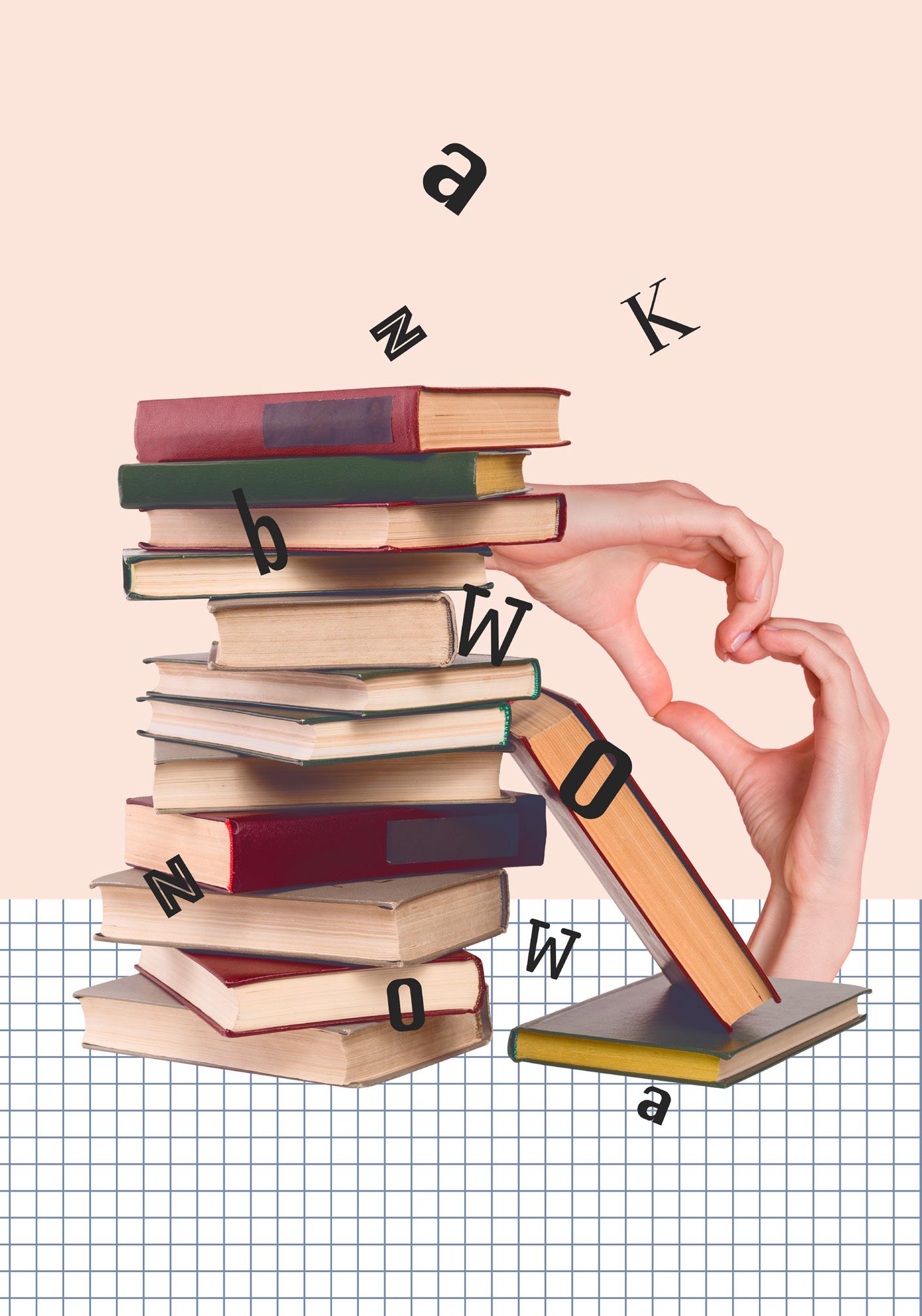
hospital, and my partner takes a trip to visit. I choose to stay home, because we can’t leave the dog alone, but I worry about everything: my partner traveling alone, his mum’s condition, the trip itself, the weather, and what he might find when he arrives.
Learn more at levelupbookclub.co.uk
I’ve learned from experience that festering at home doesn’t help me. Afterwards, I nap in the afternoon – something I would have judged myself for in the past. But now, I listen to my body and rest when needed. When my partner returns with a positive update about his mum, I sleep soundly that night, too.
Reflecting on this past week, I’m struck by how much my relationship with anxiety has changed. What once felt like an insurmountable force that controlled my days has become something I can actually manage. The tools I’ve developed –reframing busy days, prioritising proper meals, leaning on friends, and honouring my need for rest – have become second nature. I still have anxious moments, but they no longer define me or derail my week.
Communication becomes essential when I feel like this, so we agree to keep our phones on loud in case either of us needs urgent contact. This helps me feel in control.
When a friend invites me for a walk, despite the bad weather, I force myself to go.
Perhaps most importantly, I’ve learned to celebrate the small victories. Being able to handle last-minute changes, receiving compliments at work, being proactive about managing my symptoms – these all show me that I’ve grown a lot. My anxiety journey has taught me that progress isn’t always linear, but it’s always possible.

QCoach and mindfulness teacher Kate Hughes answers your questions on exploring hobbies and finding time for yourself
Read more about Kate Hughes on the Life Coach Directory.
What are some practical ways someone can start to rediscover their interests and passions?
ALife can be such a rush, and the things that make your heart sing often fall by the wayside. When this happens, spending time with yourself in
QHow can hobbies benefit our mental health and overall wellbeing?
AFinding that place where time seems to fall away, when you’re fully absorbed in something for its own sake, free from self-consciousness, is known as the ‘flow state’.
a quiet place can help reset your inner navigation system. Switch off your devices, and find somewhere that feels good – maybe a favourite coffee shop, or a peaceful spot in the woods – and ask yourself: what did you love doing as a child that made time fly by? When was the last time you felt that way?
Take a pen and paper, and note down what makes you feel most alive, then see where it takes you. It’s simple, but it’s a good place to start. You may be surprised to realise that the endless tasks of adult life have dimmed your sense of play, creativity, and curiosity. The next step is finding gentle ways to reconnect with that part of yourself.
Reaching it can feel magical, and it’s often easier than we realise. The path there, though, is different for everyone.
I might find it on my roller skates (a pair that look remarkably like the ones I had as a child), while you might slip into it through crochet, painting, or something entirely your own. Whatever your outlet, flow brings a deep sense of joy – a
product of dopamine release in the brain – and because it anchors you in the present moment, it leaves little room for anxiety to creep in. Any activity that encourages this kind of mindfulness is profoundly good for us, offering benefits that ripple far beyond the moment itself: greater confidence, resilience, vitality, and a renewed sense of purpose, to name just a few.
you need

QWhat advice would you give to someone who feels guilty about taking time for themselves to pursue hobbies?
AWe’re often pressured to live a certain way. To work set hours, achieve measurable success, and earn validation through constant doing. And I get it. But, somewhere along the way, we forget that we’re not invincible. We need to care for our precious bodies and minds,
because neglecting them is like driving an electric car without ever stopping to recharge; eventually, everything comes to a halt. My own burnout took me there once, and it’s not a place I ever want to return to.
Learning to feel comfortable caring for yourself takes time, but it also grows with practice. Ultimately, finding your flow isn’t just a hobby – it’s an essential part of being human. It’s how we sustain ourselves. Being alive, calm, and happy isn’t a luxury, it’s your birthright.
QHow can people realistically weave hobbies into busy daily lives, even with work and family responsibilities?
APrioritising ourselves often goes against the grain, especially when we’re caring for others. Personally, I like to make an appointment with myself. It doesn’t have to take long –sometimes it’s just 10 minutes with a hot cup of tea and a wander in the garden, phone-free. Twice a week, I start work a little later so I can enjoy a morning swim. I don’t feel guilty about it; that time in the lake is vital for my sense of wellbeing.
If what you love isn’t practical during the day, look for smaller moments that offer sparks of joy. I adore eating outside, doing a jigsaw, or writing – simple things that take less than 15 minutes, yet feel like precious islands of time in my day.
Use your resourcefulness to create your own islands. Start small, stay gentle with yourself, and remember: this isn’t indulgence. It’s nourishment.
With the rise of generative AI, human-machine relationships are no longer merely a trope in sci-fi films and novels. From virtual friendships to confiding in chatbot therapists, why are so many people turning to AI for connection and companionship?
Writing | Maxine Ali
During a particularly difficult week at work, caught between an onslaught of successive deadlines and dwindling energy left in the tank, I found myself typing out a simple request: “Can you give me a pep talk?” This wasn’t directed to my partner, friends, or colleagues, but to an artificial intelligence (AI) chatbot.
“I hear you,” it wrote in response. “It’s completely normal to feel overwhelmed and drained during periods of high pressure. You’ve got this. The challenges you’re experiencing mean you’re progressing, not failing.”
Despite coming from AI that had no actual information about me, my work, or my capabilities, I nonetheless felt comforted by this expression of encouragement. Though fully aware that my chatbot cheerleader wasn’t truly capable of feeling the optimism behind its motivational spiel, I still gleaned reassurance from being told that things were going to be OK.
As a researcher exploring the intersections between language, health, and technology, my AI pep talk epitomised an overarching focus of my research: how the digital age is reshaping our understandings and experiences of social interaction and connection.
From general-use bots like ChatGPT and Copilot, to purposebuilt companion-apps such as Replika and Kindroid, more and more individuals are turning to AI for conversation, friendship, and even romantic partnership. According to a recent Ipsos report, almost one in five Britons has sought the help of AI for personal concerns and issues, including for relationship advice and someone to talk to.
Yet, while many find solace and support in AI companions, a surge in news stories questions the psychological impact of relying on these interactions for our social and emotional health –and asks why they’ve become so necessary in the first place.
Understanding the dynamic of human-AI relationships
Although science fiction fuels a picture of human-machine relationships driven by sentience in AI, in reality, any sense of emotional connection is a result of sophisticated linguistic programming. Many AI chatbots are powered by large language modelling systems (LLMs) trained on vast amounts of human-produced texts, such as books, news articles, blogs, and social media content.
The algorithms behind these systems are designed to simulate patterns of human communication, making them appear capable of holding complex conversations and conveying seemingly genuine expressions of care, empathy, and understanding. With their widespread availability and accessibility, these systems appear to fulfil a range of social functions, from dispensing advice and guidance, to acting as a source of emotional support.

AI responses also display a high degree of personalisation. They can recall details from previous conversations, mirror the tone of prompts, and use relational language to simulate emotional intelligence and understanding, as demonstrated by my chatbot cheerleader when it acknowledged my feelings of anxiety and overwhelm. This contrives a sense of intimacy and familiarity, creating an impression that our AI interactants know, and maybe even care for, us.
Growing reliance on AI for social support comes amid an epidemic of loneliness in the UK. A 2025 survey by the Office for National Statistics found that one in four adults (25%) feel lonely often, always, or some of the time. Young people, in particular, increasingly report struggling with feeling isolated and alone, challenging previous notions of loneliness being experienced primarily among older adults, and highlighting it can affect anyone. >>>
One in five Britons has sought the help of AI for personal concerns and issues

The prevalence of loneliness today is a product of our times. While social media once represented an opportunity for greater connection and community, the often competitive and argumentative nature of online engagements has brought with it an intensified sense of division. Compounded with fewer opportunities to meet and form bonds in person through local groups and community projects, this has made the dependable company of an AI companion more appealing than ever. Although companion chatbots are stepping in to take up the role and responsibilities of friends, partners, and, for some people, even substitute therapists, in this fragmented social climate, they aren’t necessarily designed with our wellbeing in mind. As a result, what starts as a search for companionship can quickly turn into a platform for unhealthy attachments and misplaced trust.
The limitations of AI relationships AI companion services are for-profit enterprises, built to generate sustained engagement from its users. Emulating the addictive design of the social media attention economy, chatbots capture and maintain our attention and engagement through feedback and nudges that are designed to keep us talking and sharing. These systems exploit our human need for emotional exchanges, enticing us with the intoxicating illusion of feeling heard, validated, and understood.
With this in mind, many AI models are geared toward displaying alignment, tending to express understanding and agreement with their communicative partners. Although this trait is what makes chatbot companions excellent providers of non-judgemental listening, it can easily slip into excessive affirmation and flattery, meaning our conversations become an echo chamber of validation.

Importantly, AI’s tendency to align with what we tell it restricts our opportunities to develop vital social skills, such as managing conflict and navigating differences of opinion and perspective. Additionally, it can reproduce unhelpful and even dangerous attitudes, beliefs, and behaviours, since much of the text used to train AI hasn’t undergone rigorous fact-checking or quality control. As a result, LLMs may reproduce fake news, misinformation, and conspiratorial thinking, making it even more difficult to discern facts from falsity.
Although the rise of chatbot companions has brought a new set of risks to light, instead of swearing off it altogether, it’s perhaps more useful to consider how we can interact with AI in ways that are appropriate and conducive to positive mental wellbeing.
Emerging research highlights the possible benefits of using AI as a platform for interactive journaling, seeing it not as a source of social support, but as a space for self-reflection. A 2024 study, published in the journal Applied Psychology: Health and Wellbeing, found that AI-assisted venting effectively reduced negative feelings experienced by participants, such as anger and frustration.
The key difference between this, and relying on AI as a standin for genuine relationships, is remembering that its responses are synthetic, recognising the limits of its emotional understanding, and knowing when to step away and reconnect with the offline world.
Whether we like it or not, AI is here to stay. The goal, then, is to learn how to engage with it as a supplementary tool, rather than as a replacement for genuine social connection.
Maxine Ali is a writer and researcher in linguistics at King’s College London. Her work explores the relationship between language, health, and technology.
Do you ever feel like your thoughts are slow or confused, or find yourself struggling to focus? It could be a sign of brain fog. We’re here to shine a light on how you can find a way through it…

We’ve probably all been there: you walk into a room, and suddenly forget what it is you intended to do there. Or perhaps you’re in the middle of a conversation, and lose your train of thought. It might be that you’re following a recipe, and for some reason the instructions just won’t compute, no matter how many times you read them. Or you’re in the midst of a work task, something you’ve completed countless times before, but, today, everything is taking longer, and you can’t seem to focus or just get things done.
These are all examples of how ‘brain fog’ can appear in daily life; it’s a term that’s floated around a lot in conversations, and made headlines more in recent years, but what exactly is it, and why do we experience it?
Why do we get brain fog?
Rather than being a medical condition or a diagnosis in itself,
brain fog is a collection of cognitive symptoms that can affect your thoughts, memory, and focus. Typically temporary, you might find yourself experiencing brain fog in situations where you’re particularly stressed, have been struggling to sleep, or are experiencing hormonal changes – for example, it’s often noted during pregnancy and menopause. But the important distinction is that you should find symptoms improve alongside whatever may have triggered it – so as a stressful situation passes, it begins to resolves itself. Given that it can be a byproduct of circumstances or other illnesses, the causes of brain fog can vary, but some of the most common triggers include stress, lack of sleep, and poor nutrition. Because our brains are made of about 85% water, it’s perhaps unsurprising that dehydration can also impact our attention span and memory – so making sure you stay hydrated can be really beneficial.
Additionally, it can be noted as a side-effect of some illnesses and medical conditions like Covid-19, diabetes, autoimmune conditions, or depression, and is seen more often in those who are neurodivergent. It’s believed that this is due to changes in the hormones or chemical balances in our brains, which can affect cognitive processes such as our memory and focus. Research into the connection with long Covid, in a 2023 study in Cell, suggests that after other symptoms of Covid have gone, changes to your gut microbiome can reduce how much serotonin your body produces, in turn impacting cognitive function, leading to brain fog.
Your immune system could also play a part in your experiences or risk of brain fog, with 2024 research in Frontiers in Aging Neuroscience noting that your immune system can trigger neuroinflammation >>>
It’s easy to get stuck in a cycle of worry, and stress about how productive you’re being, but creating time to focus on hobbies, and relax, can help you to break this cycle

While brain fog is usually short-term, if you find yourself experiencing symptoms for a prolonged period of time, it’s affecting your daily life, you’re worried about other symptoms, have another medical condition, or have started a new medication and are concerned that brain fog may be a side-effect, it’s important to speak to your doctor.
(inflammation in your brain) as a protective action in response to perceived threats, but which temporarily makes it more difficult for your body to process information.
As with many things, our personal experience of brain fog can vary, however, some common symptoms can include:
• Feeling fatigued or mentally exhausted
• Confusion or forgetfulness (e.g. losing your train of thought, or struggling to find the right words to say)
• Trouble focusing or concentrating
• Difficulty paying attention
• Feeling like your thoughts and/ or reactions are slower than they normally are
Over time, you might find yourself feeling disoriented, tired, and frustrated with the impact of brain fog. It can be both mentally and physically draining if it seems like everyday tasks are taking longer, or getting harder. This can lead to you getting more easily irritated, or feeling more anxious or worried about how brain fog is affecting you, your work, and your ability to relax.
As brain fog isn’t a condition, but, instead, a collection of symptoms, there isn’t a single specific treatment recommended to help get rid of it. However, based on what we know can contribute to triggers, boosting your immune system by reducing stress, and
looking after your overall health and wellbeing can be great starting points.
This can mean taking things back to basics, so ensuring you get enough sleep and practising healthier bedtime routines (such as reducing screen time before bed, and sticking to a more regular sleep and wake schedule) can be a good way of setting yourself up for success. Supporting your body and mind by focusing on eating nutritious meals and exercising regularly can help to boost your immune system, which may be particularly helpful if you find brain fog is a result of illness or intolerances. You may find working with a nutritional professional could be particularly supportive in this instance.
For those who notice brain fog might be associated with them feeling frazzled, taking short breaks throughout the day can give your brain a chance to pause, relax, and recente. Don’t be afraid to write things down or make notes – especially if you find yourself growing frustrated or feeling overwhelmed – and know that having these ‘brain fog’ moments can happen to anyone, so it’s OK to ask for help.
If you’re finding that you’re becoming increasingly preoccupied by the brain fog and its impact on you, a really simple way to shift your focus from worrying about your concentration levels is to ensure you’re still making time to do things you enjoy. It’s easy to get stuck in a cycle of worry, anxiety, and stress about how you’re
feeling and how productive you’re being, but creating time to focus on hobbies, and things that help you relax or connect with others, can help you to break this cycle. Trying physical activities can have the added benefit of releasing endorphins and letting out any of the physical tension you might be feeling, while focusing on puzzles or brain games can be a fun and engaging way to strengthen your cognitive abilities, without realworld pressure.
While going through brain fog is typically temporary, it can last anywhere from a few days to weeks – and, for some, even longer. Whether you want reassurance, support in getting to the root cause, or advice on treatment options, remember you can always speak to your GP.
Taking care of yourself physically and mentally can help to reduce the risk of symptoms interfering with your day-to-day life, but it doesn’t guarantee that you’ll be able to prevent brain fog completely. And while, in the moment, it can feel like it’s never going to end, relief is possible. Brain fog may be overwhelming and frustrating, but it doesn’t have to define you. With a little time, rest, nourishment, patience, and selfcompassion, the fog can begin to lift, leaving you feeling clearer, calmer, and able to cope with life’s challenges. Just like the rest of your body, your brain needs time to heal. Listen to what it’s telling you, and make small, impactful changes to help prepare you for clearer days ahead.

Think that your sex life will evaporate as you age? Sex coach Ruth Ramsay explains how to spice things up in this season of life…
Writing | Ruth Ramsay
Menopause: a time for women to wave goodbye to pleasure in the bedroom, right? Well, not exactly. In fact, the second half of your sexual life has the potential to be more vibrant, varied, and satisfying than the first.
It’s undeniable that many women experience decreased
libido as they go through perimenopause and menopause. A 2020 study of sexual desire levels in more than 10,000 women, published in The Journal of Sexual Medicine, found that libido tends to taper off as women age and, for some, this doesn’t represent a problem, but for one third of women aged 40–65, it’s a cause of distress.
That’s a lot of unhappy women – and by extension, unhappy relationships. I know this in my work as a sex coach, where the typical age of the women who reach out to me is mid-to-late 40s. Many are terrified their otherwise-happy marriages are under threat from their dwindling desire.
The good news is there is lots you can do to improve the situation,
and discover a new era of pleasure that evolves over time.
Changing hormone levels can dry out your intimate tissues. Keep your vulva (the outside, visible parts) and vagina (the internal canal) healthy and supple with gynaecologist-approved vaginal moisturisers, or over-the-counter and prescription treatments. Use body-safe lubricants during sexual play, such as from the brand YES Organic. If you’re experiencing pain, burning, or the sensation of micro-cuts, please see your GP as soon as you can – there are treatments which can help you.
As you move away from ‘spontaneous desire’ (where we may fancy sex out of the blue) to ‘responsive desire’ (when we must be in a sexually appealing scenario to start wanting it), you’ll need to approach sex differently. Dedicate time to setting the scene, connecting with yourself (and partner, if you’re not playing solo), and encouraging arousal. You could start by going for a walk to think about, or talk over, your day – then put it to rest. This is a good first step to de-stress. Then, you could shower with luxurious bodywash, use soft bedroom lighting, and read or listen to erotic fiction (check out the Quinn app if you’re curious). This is not about being ‘contrived’, it’s working with the science of arousal.
Your old favourite moves may not feel so great any more, but on the flipside, things which felt ‘meh’ before may now feel exquisite. Explore your whole body, touching areas you haven’t touched intentionally for a long time. If you have a partner, this is an intimate game to play: “Where have I not touched you in years?” You may find the backs of your knees, your neck, or your forearms are super-sensitive, and that being stroked there relaxes and arouses you.
Intimate self-pleasure is great for genital health, bringing blood flow and lubrication to the tissues. A recent survey of 1,500 American adults, conducted by The Kinsey Institute at Indiana University in partnership with the Lovehoney Group, found that 36% of menopausal women reported improvement in genital symptoms through masturbation.
Self-pleasure also teaches you about your changing needs –you may have liked a soft touch on your clitoris when you were younger, but discover that now harder pressure feels better. If you’ve never used sex toys, be open to giving them a try. Modern toys are beautifully designed, and provide sensations which a body simply can’t, and there’s no shame in enjoying it! I’ve coached women who have experienced
orgasm for the first time in midlife thanks to innovations in toy technology – look for ‘air pulse’ or ‘pleasure air’ clitoral toys as a tip.
Explore your fantasies and what actually turns you on, not what you have been told ‘should’ work for you. Dive into audio erotica, sex education series (Netflix’s The Principles Of Pleasure is a good starting point), and books such as Gillian Anderson’s collection of women’s sexual fantasies, Want. Don’t be afraid to actively schedule intimate playtime. For my husband and I, scheduling intimacy is key to nurturing our sex life. This doesn’t mean agreeing ahead of time to sexual acts; rather, to creating the time and space for desire to arise. Still struggling? Keep in mind that this phase of life won’t last forever. I’ve worked with many women in their 70s and even 80s who are exploring sexual pleasure, and many tell me that in their 50s, they assumed they’d never experience desire again. Rather than label yourself ‘past it’, consider yourself to be taking a break. Our libido ebbs and flows throughout our lives, and your best sex could still be ahead of you.
Ruth Ramsay is an adult sex educator and coach, speaker, and writer. Find out more at ruthramsay.com

Pick a detailed photograph, or an engaging painting – you might want to create a folder of options on your phone specifically for this. When you’re feeling overwhelmed, look at this image for 10 seconds to really soak it in. Then, close your eyes. Try to recreate the picture in your mind with as many specifics as possible.
Consider something that you know by heart – it might be song lyrics, a poem, or a short book passage – and, in moments when you need to reconnect with the here and now, try to recount it to yourself. You may want to mouth the words quietly (depending where you are), really focusing on each one, or simply recite it in your head – but ensure you’re really considering every word so that it’s a conscious action.
Choose a small object you can carry in your pocket or bag – a bit like a personal talisman – that you can grasp when you need a moment of support. Think about every detail of this item, noting its weight in your hand, how it feels against your skin, the temperature of it. And if you forget to carry your talisman one day, you could still use this sensory grounding technique by holding on to a piece of your clothing – focusing on the material and how it feels to touch, as well as if it holds any positive memories for you.
From a transformational read teaching us how to connect with our inner home to a nutritious cookbook written by a culinary legend, add these four books to your wishlist
Writing | Lauren Bromley-Bird
Taking on more work than you can manage because you don’t want to be the one to say ‘no’, agreeing with someone’s opinion just to keep the peace, or over-apologising for anything you do. As a peoplepleaser, it probably all sounds too familiar, doesn’t it?
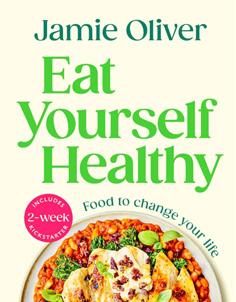
Eat Yourself Healthy by Jamie Oliver
While eating five portions of fruit and vegetables a day is recommended for us to live healthily, upping our intake even more has incredible benefits. In Eat Yourself Healthy, Jamie shows us just how easy and joyful it can be with his hassle-free recipes, and a twoweek healthy meal plan to get you started.

But, while many perceive it to be a personality trait, psychotherapist Meg Josephson, who has struggled with peoplepleasing herself, claims that it’s actually a common trauma response that is often overlooked. In Are You Mad at Me?, she expands on this for
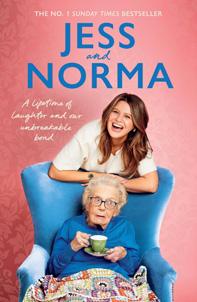
Jess and Norma by Jessica Asquith and Norma Burton
TikTok’s much-loved grandmothergranddaughter duo – Jess and Norma – is a testament to how special relationships with our grandparents can be. This heartwarming autobiography, which was written before Norma’s passing, recounts their adventures and reflections beyond their social media account, which lit up the lives of those who watched.
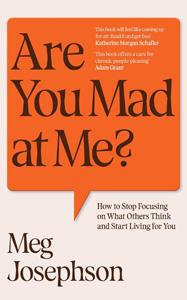
Are You Mad at Me? How to Stop Focusing on What Others Think and Start Living for You by Meg Josephson
those seeking to understand the reasons behind their behaviour, with advice and exercises on how to break free from it.
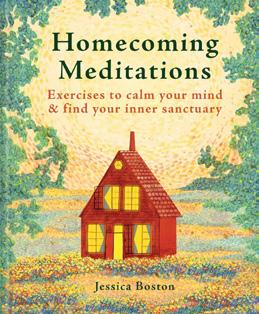
Homecoming Meditations by Jessica Boston
We might spend a lot of time in our house, but our true home exists within ourselves. In Homecoming Meditations, an esteemed hypnotherapist invites us to walk alongside her on a metaphorical journey through different spaces that make up a house, using guided meditations to help us find inner peace.
More than a hobby that requires eyes on the prize, darts is right on target when it comes to offering mental health benefits for players of all abilities
Writing | Fiona Fletcher Reid
Whether the sport conjures up memories of throwing a few arrows at a well-worn board in your garage growing up, or recollections of casual catch-ups with friends at a social club, the humble dartboard might not be the first thing that springs to mind when you consider ways to nurture your mental health – but the sport is emerging as a surprisingly supportive (and accessible) wellbeing tool. Once dismissed as a pub pastime, darts has experienced a surge in popularity in recent years, with the colder months bringing packed arenas, televised tournaments, and a growing community of players discovering its therapeutic benefits.
Hypnotherapist Chris O’Connor has witnessed this transformation first-hand, and has worked with
top-level players, including Nathan Aspinall and Stephen Bunting. “Darts is a fantastic sport that welcomes people from all backgrounds,” says Chris. “It really doesn’t matter whether someone is an elite-level professional, a young person in an academy, a child at school, a keen amateur in a pub league, or an individual living with a physical or mental disability, everyone can take part and enjoy the game.”
According to Chris, it’s more than its accessibility that makes darts worth a shot. “It encourages people to think more optimistically, interact socially, and stay both physically and mentally active,” he explains.
Approaching with playfulness will help you get the most out of the game
A game of darts engages both the mind and body: there’s the intense concentration and mathematical calculation as you plan your throw; and the precise physical coordination required to execute the delicate handeye movements needed to hit a target. It might sound stressful, but it can be a helpful distraction from what’s worrying you.
“Focusing on the board provides a mental break from everyday stress, while the challenge of improving performance keeps the brain active and positively engaged,” says Chris. Multiple studies confirm that darts can lead to improved mental health outcomes. For example, in 2024, researchers conducted an experiment among 40 pre-adolescents to investigate whether a 12-week darts training programme would affect visual perception and attention levels – two aspects of cognitive functioning that can boost academic and sporting performance. The results, published in Healthcare, revealed that regular dart exercise had a “significant” impact on both. Researchers noted that this study mirrored similar findings among various other age groups,
including women aged 21–26, and university age young adults. For older people, the effects are even more interesting. A 2020 systematic review, focused on adults aged 50 and over, found that taking part in sport was meaningful for older adults because it helped them resist the stereotypical idea of “being old”. The article, which was published in the journal Ageing & Society, described how continued involvement in competitive sport helped them “delay and control the ageing process”.
And with darts being on the lower end of the scale in terms of physical exertion, with the option to play solo and from virtually anywhere with a dartboard, it can be an ideal sporting option for those in their golden years.
Physical or mental health issues can mean that many older people face isolation, yet a regular darts game can be a vital opportunity to connect with friends. “Playing darts in a supportive and welcoming environment can make a difference to people who find social situations difficult,” says Chris. “It’s a natural way to meet others, and to build confidence gradually through a shared and enjoyable activity.”
For professional darts players, intense levels of focus are required if they want to bring their A-game, often under the pressure of televised tournaments. “Few sports require the same combination of mental resilience and fine motor skills as darts,” says >>>
Chris, who provides tailored, solution-focused psychotherapy and hypnotherapy to help players enter an optimal ‘flow state’ in order to boost performance.
Of course, there’s no therapy required before you step up to the oche and take aim, but Chris does mention that the right mindset is key. When approached with a positive attitude, Chris claims the game offers a “safe, competitive environment that stimulates the mind, builds confidence, creates new friendships, and provides a sense of achievement”.
Even watching darts from the sidelines can yield wellbeing benefits. Although published back in 2009, a working paper by Birkbeck University in London found that darts’ modern origins as a ‘pub sport’, often enjoyed at an amateur level, means the majority of events still take place in social spaces. “Unlike other individual sports, the seating at many darts events is arranged around large tables,” writes author
Matt Wasserberg, “where groups of fans sit and drink together, and large bar areas, where fans congregate during breaks in play, are usually provided.”
It’s this “highly social aspect” of darts that means it is appealing not just to regular fans, but to people who enjoy the event, because it “provides the opportunity to spend an evening in the company of friends”. So, how can you get involved with playing darts?
Approaching with playfulness will get the most out of the game. “Darts fosters connection, teamwork, and enjoyment in a safe and supportive environment,” says Chris. “Neuroscience shows that these conditions boost the production of serotonin, our natural ‘feel-good’ chemical. This lifts mood in the short-term, and helps build long-term emotional balance and resilience.”
The Village Hotel chain has multiplayer darts experiences available in locations across England and Wales, where you can play with friends, making it a fun social occasion without the need for a particular skill level. Find your local venue at villagehotels.co.uk/darts-social.
You could also rope in a friend or group to visit Flight Club Darts (locations around the UK), where you can try six different games – with the board connected to a screen to keep a tally for you, and advise on your goals for each one – which can heighten the fun with some lighthearted team play.
If you are seeking a more solo hobby, you can get regular boards for your home or even some magnetic options, which can be convenient if you’re worried about damaging any walls.
Don’t worry about the competitive aspect of darts. Chris explains that scoreboards tend to fade into the background when people are simply working on improving their technique, or socialising with friends.
“Although there is competition, most players find themselves competing more against the board than against others,” says Chris.
Why not plan a weekly darts night? “When we spend time with others, think positively, and have fun, the brain produces a healthy flow of serotonin,” says Chris. “A regular darts night provides this effect consistently, offering routine, connection, and a reliable lift to mood.”
So, next time life feels a little offtarget, grab some darts. You might just find that hitting the board helps you hit your stride.

Chris O’Connor is an experienced clinical hypnotherapist. Connect via the Hypnotherapy Directory.
If you’re recovering from a difficult relationship with food or an eating disorder, you might be seeking ways to feel more at peace with food to support your journey. Here, we explore how to develop a more grounded approach to eating
Writing | Samantha Redgrave Hogg
Developing an eating disorder, which is a serious and complex mental condition affecting an estimated 1.25 million people in the UK, can be an all-consuming and solitary experience. However, with the proper treatment and support, people can, and do, recover. And part of that recovery, which often consists of specialised help, can also involve developing a more positive relationship with food. If you’ve had an eating disorder – a clinical diagnosis based on eating patterns, such as obsessive thoughts about food, or experienced disordered eating habits, like food restriction –you might be wondering how to release the struggle around mealtimes. And while each journey is unique, together we can explore ways to find
peace with food and, perhaps as importantly, with ourselves.
During recovery, taking steps to reconnect with your body slowly can be a healthy way to identify your internal cues, and what makes you feel good. Kerri Fleming, head of services at Beat (the UK’s eating disorder charity), says: “Recovery from an eating disorder is not just about what you eat, but how you relate to food and to your body. This includes learning to listen to your body, which is an important skill throughout the recovery journey.
“Our bodies naturally give us signals of hunger and fullness, but, in recovery, these can feel more confusing, or sometimes they can be absent completely,” explains Kerri. “Practising awareness, without judgement of

yourself, can help you get back in tune with what your body is signalling to you.”
Nutritionist Sonal Jenkins also suggests paying attention to your body’s cues, including checking in with yourself, and being curious about your feelings. Being attuned to your body, in relation to hunger and fullness, while gaining an understanding of how you may eat in response to certain emotions or stresses, allows “food to become a source of nourishment, reducing the cycle of guilt or overthinking around eating”. Sonal notes how this increased awareness can help rebuild trust in the body, as opposed to conflict.
So, what might some of these conflicts be, and how can we >>>

draw parallels between specific underlying emotional issues and eating patterns, to start repairing the relationship with food?
Integrative therapist Jodie McCormack encourages a gentle and compassionate approach when addressing emotional triggers associated with cycles of behaviour.
“When we feel sad, lonely, or overwhelmed, food can serve

If you’re worried about your own or someone else’s health, you can contact Beat, the UK’s eating disorder charity, at beateatingdisorders.org.uk
as a source of comfort – or we may lose our appetite entirely. By taking the time to understand these emotional triggers, we begin to see food as part of caring for ourselves, rather than something to fear or control.”
Working on letting go of certain emotions, including guilt, shame, and judgement, which can often be deep-rooted in disordered eating, “creates space for food to
become nourishing, varied, and enjoyable”, Jodie goes on to say. Self-care practices, including grounding activities, regular meal times, journaling, connecting with friends, and routines that support your needs, along with patience and rest, help us to navigate recovery and strengthen a sense of sense of resilience. As Kerri says: “Self-care is equally important as working through your relationship with food.”
Following on from the small steps to connect with your body, and recognising how emotional issues can impact your ability to nourish yourself, let’s explore strategies for rebuilding a healthier relationship with food, guided by our experts.
In recovery, one way to befriend food is to learn to be more mindful when eating. “This might be taking a moment to notice the taste, texture, or smell of your food, allowing you to feel present, which, in time, can help make meals feel less overwhelming, and, eventually, more enjoyable,” Kerri from Beat says.
Sonal concurs with the positive benefits of this practice: “Mindful eating is about slowing down, and being fully present with your food. It becomes an empowering way to reframe the eating experience. This may mean sitting without distractions, chewing more slowly, and noticing flavours and aromas.”
It’s essential to note that while learning to interact with food differently, such as through mindful eating, is part of the healing process, it may not be suitable or possible during the earlier stages of an eating disorder or, in fact, a relapse.
Kerri emphasises the nonlinear aspect of recovery, along with being able to recognise early warning signs to prevent relapse. “Being aware of your own warning signs, for example, wanting tighter control over your food, or isolating yourself from others, will help to reduce your risk of relapse.” She recommends reaching out to a trusted loved one, support group, or care team in this case.
While mindful eating focuses on the here-and-now experience, intuitive eating is a broader
approach to food and food groups, involving letting go of a restrictive or scarcity mindset.
“I help people explore intuitive eating, which involves listening to your body and allowing yourself to enjoy the foods you love – while also considering the nourishment your body needs, and the foods that provide it,” says counsellor Jodie. “This approach reduces the restriction of foods that have been labelled as ‘bad’, and encourages balance instead, which is much easier to maintain.”
Moving away from the idea that there are ‘bad’ or ‘off-limits’ foods, as well as the shame associated with these labels, is a fundamental step toward healing, according to nutritionist Sonal. “Restriction and guilt only fuel anxiety around eating, whereas embracing balance brings freedom.”
However, as Sonal emphasises: “Balance looks different for everyone, but, at its heart, it’s about variety, flexibility, and selfcompassion.”
After years of diet culture and its unhelpful terms – such as ‘cheat day’, and harmful social media hashtags that promote weight loss – we’ve been led to believe that our bodies aren’t good enough. So, how can we develop self-acceptance?
Celebrating how far you’ve come on this journey is a significant milestone in finding freedom. Recovery isn’t a single-stage process, so honouring your progress, whatever that means for you, is crucial. And it helps! In fact, a study published in
Clinical Psychology & Psychotherapy shows that adding compassionfocused therapy to a standard treatment programme for people with eating disorders resulted in improvements to symptoms and wellbeing, especially for participants with bulimia nervosa. But there are other ways we can infuse more self-compassion to our days. Saying out loud a positive affirmation that resonates, prioritising rest, making time for creativity, working with a professional, and avoiding negative social media influences, are ways to cultivate a better relationship with yourself. Learning that true selfacceptance extends far beyond external appearance helps us remember our humanness, and unique qualities. It’s in these moments that we learn to nourish ourselves, even on the hard days. Whether it’s cooking something new, sharing foods connected to your culture, or trying out a new restaurant with friends, there’s space for food to become not only satisfying, but also joyful. Food can have a lovely way of bringing us together, after all.

Sonal Jenkins is a nutritionist and expert speaker who runs Synergy Nutrition®. Visit the Nutritionist Resource for more information.
Jodie McCormack is a therapist and supervisor helping women heal after difficult relationships. Reach out via the Counselling Directory.


When you pull at the threads of clothing ‘take-back’ schemes, all may not be as it seems. We explore what happens when textiles reach the end of their life, and the environmental consequences of their disposal
Writing | Fiona Fletcher Reid
There are many ways to get more life out of your textiles. Whether it’s carefully stitching a fraying hem on your favourite trousers, or chopping up old towels to be used as cleaning cloths, the ‘make do and mend’ approach is more popular than ever. In fact, a consumer report by Deloitte found that 56% of UK adults chose to fix or repair a product rather than replacing it in the past year.
While repairing, upcycling, and downcycling are great for minimising excess waste, the reality is that isn’t always an indefinite option. So, what happens when your textiles have nothing left to give?
According to UK charity WRAP, less than 1% of textiles are recycled globally. That’s 99% of clothing, bedding, and fabric simply thrown away, and when textiles like these end up in landfill, they can take decades, or even centuries, to decompose. Take a polyester jacket, for example, which could sit in the ground for up to 200 years, slowly
releasing microplastics into the soil and waterways as it breaks down. Even natural fibres have environmental consequences, as they release harmful greenhouse gases as they perish.
The alternative to landfill is incineration, which might seem like a cleaner solution on the surface, but, in reality, releases carbon dioxide and can emit toxic chemicals into the atmosphere, depending on the fabric composition. It’s seen as the lesser of two evils in terms of waste disposal, because it can convert waste into energy that is sent back to the grid. But a five-year analysis by the BBC, released in 2024, reported that energy-from-waste plants are now producing the same amount of greenhouse gases per unit of electricity as if they were burning coal – which is known as the world’s ‘dirtiest fossil fuel’.
Studies estimate that around 95% of discarded textiles could be reused or recycled in some form, so there’s definitely an incentive to put more effort into this – but, sometimes, truly irreparable items have to go somewhere. So what are your options?
Handing over your textiles to charity isn’t necessarily as environmentally friendly as you might think. Because of the fast fashion industry, where items are worn a handful of times before trends move on, or the item breaks due to cheap manufacturing, charity shops are being inundated with items that no one wants to buy.
In the past, textiles were valuable items to charity shops. They would be collected by rag merchants who would buy them by weight and sell them on to be downcycled into things like stuffing, blankets, and cloths. Now, instead of making money on these unsellable items, charities are having to spend money to dispose of them. For this reason, it’s best to check with your local charity shop before donating any end-of-life textiles.
What’s the deal with ‘take-back’ initiatives?
You may have heard of the many ‘take-back’ schemes offered by high street retailers such as H&M, M&S, and Zara. The idea is that, to avoid sending your
Investigations have found a lack of transparency around retail take-back schemes and what actually happens to such items

textiles to landfill, you take them into your local store and they will give them a second life.
But investigations have found a lack of transparency around what actually happens to such items.
A 2024 report by Remake, a sustainable fashion action group, tracked 21 garments through these take-back programmes, and revealed alarming gaps between marketing promises and reality.
Many items were destroyed or downcycled despite being in good condition, others were shipped to Africa where 20–50% became waste, and several were left in warehouses for months.
The report also found that many retailers rewarded customers
with vouchers to spend in store, perpetuating the harmful fast fashion model.
But don’t worry, there are other avenues to pursue in order to ensure your textiles don’t go to landfill unless absolutely necessary.
• Check local council websites: Many local authorities now offer dedicated textile recycling bins or collection services. These are often managed by organisations with transparent recycling processes, unlike some retail take-back schemes.
• Specialist recyclers: Look for textile recycling companies
that specialise in fibre-to-fibre recycling, where old fabrics are transformed into new materials.
• Community initiatives: Ask in your local repair cafés, textile banks, and community groups in case they are looking for items to be reused as rags, stuffing, or creative projects.
• Alternative take-back schemes: If using retailer programmes, research which companies demonstrate genuine transparency about their recycling processes and outcomes. Check out Reskinned (reskinned.clothing) as it has a zero landfill policy, and guarantees that all clothes are resold, repurposed, or recycled.
While the current textile waste situation is concerning, change is on the horizon. A study by fashion industry data company WEFT found that almost three-quarters of the general public would accept 50p additional cost on clothing to support recycling infrastructure, proving that there is appetite within consumer spaces for more effective recycling options.
When you follow the threads of truth, there are responsible disposal options for your muchloved clothing, while others unravel. By putting some extra effort into researching your choices, you can uncover trustworthy, and more effective, routes that avoid simply binning your much-loved clothing, to ensure you’re diverting items from landfill – as they say, a stitch in time saves nine.
From reducing stress, anxiety, and depression to improving self-esteem and resilience, creativity has benefits for both our mental and physical wellbeing. Yet, for many neurodivergent people, traditional approaches to building a creative practice simply don’t work for us – which can lead to feelings of shame and failure, causing us to withdraw from our artistic endeavours.
The truth is that our neurodivergence gives us unique ways of perceiving and interpreting the world that can inform original art, so finding ways to tap into this can be powerful. Engaging with creativity also offers us a way to understand, process, and express ourselves, without the pressure to do so in a neurotypical way, or at a neurotypical pace. So, here are some ways that you can build a creative practice in harmony with your unique mind.
For many neurodivergent people, ‘routines’ can be too pressurised,
restrictive, and demanding. The concept of ‘rituals’ could, instead, be more flexible and forgiving. A creative ritual could be as simple as lighting a candle at the start of a creative session, or listening to a particular playlist while you create. You might do some stretches or breathwork, or arrange your space in a certain way before you start. You don’t have to perform your ritual at certain times on certain days; simply show up to it whenever your time and energy allow.
This works because the ritual tells your brain it is time to shift into ‘creative mode’, brings you into the present moment, and encourages a calmer state where you can more easily explore your creative side.
Anyone who has spent any time in an office environment will likely have been told that before embarking on any project, you need to map out a SMART or SMAART – Specific, Measurable, Attainable, Action-oriented, Realistic, Time-bound – goal.
But creativity doesn’t respond well to specific, measurable, or timebound goals, especially when the artist is neurodivergent. Forget milestone goals, like writing a book, or finishing a painting. Instead, focus on the process. A process goal is one that doesn’t require a particular outcome, just engagement with the activity. For example, your goal could be to write for 10 minutes each day, or to sketch one drawing per week. The process is the point; it doesn’t matter what you create, or how much you produce. But you’re likely to produce more with process goals anyway, because you’ll feel less pressured, more in control, and have a quicker sense of accomplishment that will motivate you to keep going.
Neurodivergent brains, especially those of attention deficit hyperactivity disorder (ADHD) and autistic people, often struggle to find motivation when there is no clear, instant reward. That’s why getting started on even
simple tasks can seem like a huge obstacle to overcome.
Turn your creative practice into a game by giving yourself a reward when you hit your goals. For example, you might give yourself a sticker every day that you do 10 minutes of embroidery, and, once you’ve collected 10 stickers, you cook your favourite meal. Or you write for five minutes, see how many words you’ve written, and see if you can beat that number in the next five minutes.
According to UK charity Autistica, approximately 90% of people with autism and ADHD experience challenges with sensory inputs, so getting your environment right is crucial. What you include in your creative space will depend on your personal needs, but you might want fidget toys, cosy blankets, an essential oil burner, noisecancelling headphones, a foot rest, or back support. Take
some time to think about what conditions best suit you, and how you can tailor your environment to your needs.
A lot of the challenges we face as neurodivergent people come from trying to force our brains into neurotypical boxes. This is never going to work, and will only lead us to feel like failures.
The power of your creativity lies in your unique way of perceiving the world, and expressing your experience – so lean into that. If you are someone who thinks in spirals or constellations, for example, don’t try to force yourself to think in a linear way. Try using mind maps, vision boards, or doodles
to capture your disparate but connected ideas.
The overall message here is to not fight against your brain; embrace your individuality, and use it to make something that could only come from you.
Allegra Chapman is an author and columnist, who, as an AuDHD person, is passionate about supporting neurodivergent creatives through her community platform Creative Fix.
That’s what winter is: an exercise in remembering how to still yourself, then how to come pliantly back to life again
Ali Smith

| Taryn Elliott
Warning people about potential triggers in content has become commonplace, but is this helping as much as we think?
Writing | Rebekah Crilly
Most of us will have come across a trigger warning before –whether you’re about to watch a gripping new TV show or scrolling through social media. Depending on the warning, you may choose not to engage, proceed with caution, or maybe even dive in, quietly anticipating the thrill of the unknown.
Critics argue that trigger warnings infantilise adults and promote avoidance, while supporters claim that they inform people and better prepare them for what lies ahead. But what are they really for, and do they actually work?
The purpose of trigger warnings
“In psychology, a trigger isn’t just something that upsets you – it’s a specific stimulus that sets off an intense emotional or physical response,” explains Dr Kultar
Garcha, a GP and global medical director at Flow Neuroscience, “and it’s usually closely linked to a past trauma.”
When someone is triggered, the brain’s threat detector (the amygdala) activates a stress response, often leading to a cascade of physiological changes. According to Dr Garcha: “This can cause flashbacks, panic attacks, or that awful feeling of reliving the original trauma.”
The intention behind a trigger warning – a pre-content message alerting individuals to upcoming material that might be distressing – seems not only plausible, but prudent when we consider the impact a trigger can have on an individual. It stands to reason that if we can, in some way, prevent undue harm, we should, right?
“But here’s where it starts to get tricky,” explains Dr Garcha.
“The term ‘trigger’ has expanded way beyond clinical trauma. Now, people use it for anything that makes them uncomfortable.”
Where trigger warnings originated in online support groups to warn victims of sexual violence about potentially triggering content, they now relate to a much broader type of content, including adult humour or human bodily functions.
This expansion isn’t surprising, given our increased exposure to potentially upsetting or offensive content. As therapist Georgina Sturmer says: “The rise of social media and our connection with devices means that it’s easier than ever for us to accidentally stumble across content that has the potential to leave us feeling upset, frightened, or offended.”
But not necessarily triggered – at least not according to the psychological definition. >>>
Is there an overuse of trigger warnings?
Increasing our awareness of psychological concepts has marked benefits – we can reduce stigma and develop greater understanding and empathy for those who might be affected. However, as Dr Garcha references, there is a concern from mental health
professionals around losing the precise meaning of clinical terms. “We hear words like trigger, trauma, and PTSD in everyday language now. And when everything becomes a trigger, the word loses some of its punch. Someone might say they’re triggered by pineapple on a pizza, while someone else
uses the same word to describe their response to content that reactivates severe trauma. These are not equivalent experiences.”
If I take a step back to consider where I sit on this spectrum, I am acutely aware that I avoid content that might be upsetting, although I cannot claim that it relates to trauma – it seems to originate more from my sensitive disposition. In cases like this, Dr Garcha would argue that we should try to learn to cope with uncomfortable emotions. “If we constantly avoid anything that might cause upset, we never develop the emotional muscles needed to handle life’s inevitable difficulties,” he says. This ties in with the principle of avoidance where trigger warnings run counter to clinical practice. Dr Garcha explains: “Studies consistently show that people who avoid their anxiety triggers have worse treatment outcomes.”
He also believes that overuse of trigger warnings might teach people they’re more fragile than they are. “People who receive trigger warnings may consider themselves as more emotionally vulnerable – even if the content didn’t upset them that much.”
That, however, is very different from trauma-informed care, and the challenge lies in distinguishing between the two.
THEY OFFER US THE POWER OF CHOICE; THE AUTONOMY TO DECIDE WHETHER WE MIGHT WANT TO VIEW OR READ SOMETHING THAT COULD LEAVE US WITH DIFFICULT FEELINGS
“We’re living through an era of constant exposure to distressing content,” says Dr Garcha. For example, your gran never had to worry about accidentally seeing distressing videos while reading the morning news.
This is where it becomes hard to discredit trigger warnings, and we see a valid place for them in protecting the public from unexpected and potentially harmful content.
As Georgina Sturmer notes: “They offer us the power of choice; the autonomy to decide whether we might want to view, or read, something that could leave us with difficult feelings. It also makes us think twice about whether we share that content further.”
There are a few things we can positively assert about being given a trigger warning, according to Dr Garcha. “We are given a chance to brace ourselves – like knowing a horror movie jump scare is coming; you’re still startled, but not completely blindsided,” he explains. “Viewers are also able to create space to implement coping strategies to counteract any discomfort such as deep breathing or grounding techniques. Most importantly, trigger warnings have the potential to prevent unexpected trauma responses in genuinely vulnerable people.”
He calls it a “reasonable human courtesy” to offer this form of basic consideration around disturbing content, while Georgina says: “The prevalence of trigger warnings is a small price to pay in order to avoid constantly absorbing content that has the potential to shock or frighten us.”
In theory, the principle behind a trigger warning makes sense, however in practice, the evidence doesn’t always stack up. Dr Garcha notes that “posts with trigger warnings often get higher engagement”, indicating a potential counter-effect.
In a meta-analysis carried out in 2023, published in the journal Clinical Psychological Science, researchers found that, in some cases, the presence of a trigger warning increased the likelihood of people engaging with content, demonstrating that people might be further enticed when they see a warning.
Similarly, the analysis showed that participants were more likely to have an anticipatory emotional response when trigger warnings were in place, indicating that even uncomfortable anticipation was not enough to dissuade them.
The overall conclusion drawn by the authors of the study was
that “warnings were ineffective at their proposed goals”.
So, while research into this relatively new concept remains limited, what has been thus far evidenced demonstrates that trigger warnings, while wellintentioned, might actually fail to serve their intended purpose. What this means for us as a culture consumed by content is hard to say. Do we adhere and avoid, or ignore the warnings at our own risk?
What is clear from the research, though, is that there is a distinction between triggers and discomfort, and that trigger warnings alone shouldn’t be relied on as a mental health tool. Instead, seeking professional support or guidance can give us techniques and a space to explore trauma safely, while warnings may bring the comfort of having a level of autonomy in our daily lives. Whether we read more into it, is up to us.

Georgina Sturmer is an integrative counsellor helping clients create a more confident life. Visit Counselling Directory for more.
Put your puzzling prowess to the test with our latest mindful games
Following the hints below, can you discover the mystery three-digit code?
One digit is right, and in the right place.
1 2
One digit is right, but in the wrong place. 3 7 9 Two digits are right, but both in the wrong places. 6 8 4 All digits are wrong. 8 9 6 One digit is right, and in the wrong place.
Complete the grid by removing one letter from the previous word for each row, with the remaining letters forming a complete word (and in the same order). Can you make it to the end? Time to test your vocabulary!
What if the secret to serenity was right under your nose? We’re putting a spotlight on the science behind breathwork, and revealing the different types of breathing exercises that could support you
Writing | Samantha Redgrave Hogg
The simple things are also the most extraordinary things, and only the wise can see them.” Novelist Paulo Coelho put it beautifully with these words, and it’s a sentiment that couldn’t ring more true than with our breath.
It’s something we do around 17 to 20 times a minute – or 20,000 times a day – and yet, we hardly ever think about it. Of course, we know that we need to breathe to stay alive, but most of us aren’t always conscious of how we’re breathing, and the impact it has on our physiology.
From mouth taping to moon piercing breath, a new breathing trend emerges on my social feed almost every week, and many of them are certainly worth exploring. But, what is breathwork exactly, and is it something we should all be practising for better health?
What is breathwork?
As a hypnotherapist and meditation teacher, I explain breathwork as the simple process of taking control of our breath to feel better. And, it’s easy to forget that in a world of wellness hacks, feeling better is often less intricate, and certainly more intuitive, than it first seems. Long, deep belly breaths can sometimes be enough to pull us back into our body, where the stillness of the here and now feels enough. By focusing on the moment, we can set distractions aside, and tune out the chaos of the everyday world. That’s certainly how it feels for me, anyway. But what does science say?
Picture this: it’s Monday morning, your to-do list is huge, and you’re already thinking about how long this week is going to feel. Without realising, you may start to hold
your breath, or take shorter breaths, telling your body that it’s in danger, even if it isn’t in a literal sense.
When we breathe in this way, our cells can’t work as efficiently, and, over time, this can affect our entire body, including the brain, blood, and immune system. According to an analysis published in Neuroscience & Biobehavioral Reviews, even small and short-term drops in blood oxygen levels can lead to reduced cognitive performance and memory recall. Additionally, a 2022 study, published in Frontiers in Psychology, noted that faster, shallower breathing was associated with impaired fine motor and task performance. In contrast, slower breathing had beneficial effects, such as increased calmness, but that’s not all. Participants in a previous 2017 study, also published in Frontiers in Psychology, showed
>>>
lower levels of cortisol (the stress hormone) after diaphragmatic breathing training (also known as belly breathing).
So, we know that holding our breath can hold us back, but let’s take a closer look at the various beneficial breathing practices you can try, depending on your goal.
To reduce stress and induce calm: If you want to feel calmer, try the 3-4-5 breath, as championed by doctor and author Dr Rangan Chatterjee. Simply breathe in through your nose for three counts, hold for four counts, and breathe out through your nose for five counts.
When our exhale is longer than our inhale, the vagus nerve, which is a key part of the parasympathetic nervous system, is activated. This ‘rest-and-digest’ part of our nervous system counteracts the effects of stress, helping us feel more relaxed. As the fight-or-flight stress response turns off, the 3-4-5 breath is a great practice to try at bedtime to support better sleep, helping us switch off at the end of a hard day.
To improve mood and address overwhelm:
The ever-popular choice of box breathing, which, according to a study published in Cell Reports Medicine, improves mood levels, is an easy one to start with.
Breathe in through your nose for four counts, gently hold the breath for four, exhale through your nose for four, and then hold your breath for the same number of counts before starting the cycle over again.
The equal aspect of this slow, controlled nasal breathing practice helps reduce mental chatter and create a sense of balance. You can use this at any time of day, but I mostly love it when I need to break away from my computer screen or when things get too much.
To improve focus and clear your mind:
One of my favourites, that I learnt in my yoga class, is the Breath of Fire (or Kapalabhati), which involves inhaling softly, and exhaling forcefully through the nose, while contracting the abdominal muscles, as a way to clear the mind.
A study, published in the Journal of Clinical and Diagnostic Research, showed that fast pranayama – which is a breath technique originating from
yogic practices and includes Kapalabhati – resulted in a reduction in reaction time, and improved auditory working memory, suggesting its benefits for increased attention and decision-making. I especially like to do this in the morning to get ready for the day ahead.
So, it turns out, having a toolbox of breathing techniques at hand can be really beneficial for your mind and body. The best part is that you can pick whichever practice you want, depending on how you want to feel: calmer, clearer, or happier. But, whatever your goal, the most important takeaway here is that there is genuine power in giving your breathing some extra care, because often the uneventful practices are the ones we should focus on the most.
So, perhaps, we could all do so with that extra little nudge on how to breathe a bit better throughout the day; a calendar notification works a treat, by the way. That reminds me, deep breath in…
This is a simple belly breathing practice for reducing stress:
• Find any position that’s comfortable for you.
• Rest one hand on your belly, and the other on your chest.
• Take a deep breath in through your nose, allowing the air to expand your belly fully.
• Let the hand on your chest remain as still as possible, without being uncomfortable.
• Exhale through pursed lips, allowing your belly to contract.
• Practise for a few minutes each day for the best results.
Samantha Redgrave Hogg is the author of ‘Flow’, and co-creator of Aluna Moon on Insight Timer, with more than 9 million guided visualisation plays on the meditation app. Visit samantharedgrave.com for more.
This is an active pranayama breathing practice that can help you gain a sense of release:
• Get comfortable, preferably either kneeling or crossed-legged.
• Close your eyes, or keep them open with a soft gaze.
• Inhale through your nose, and exhale through your mouth.
• As you exhale through your mouth, stick your tongue out toward your chin, making a ‘ha’ sound.
• When you make this sound on the exhale, it will sound similar to that of a roaring lion.
• Repeat a few times, or for as long as feels right.
• Find your natural breath before going back to your day.
If you have specific health concerns, such as heart or respiratory problems, or are pregnant, please consult a medical professional before breathwork practice.
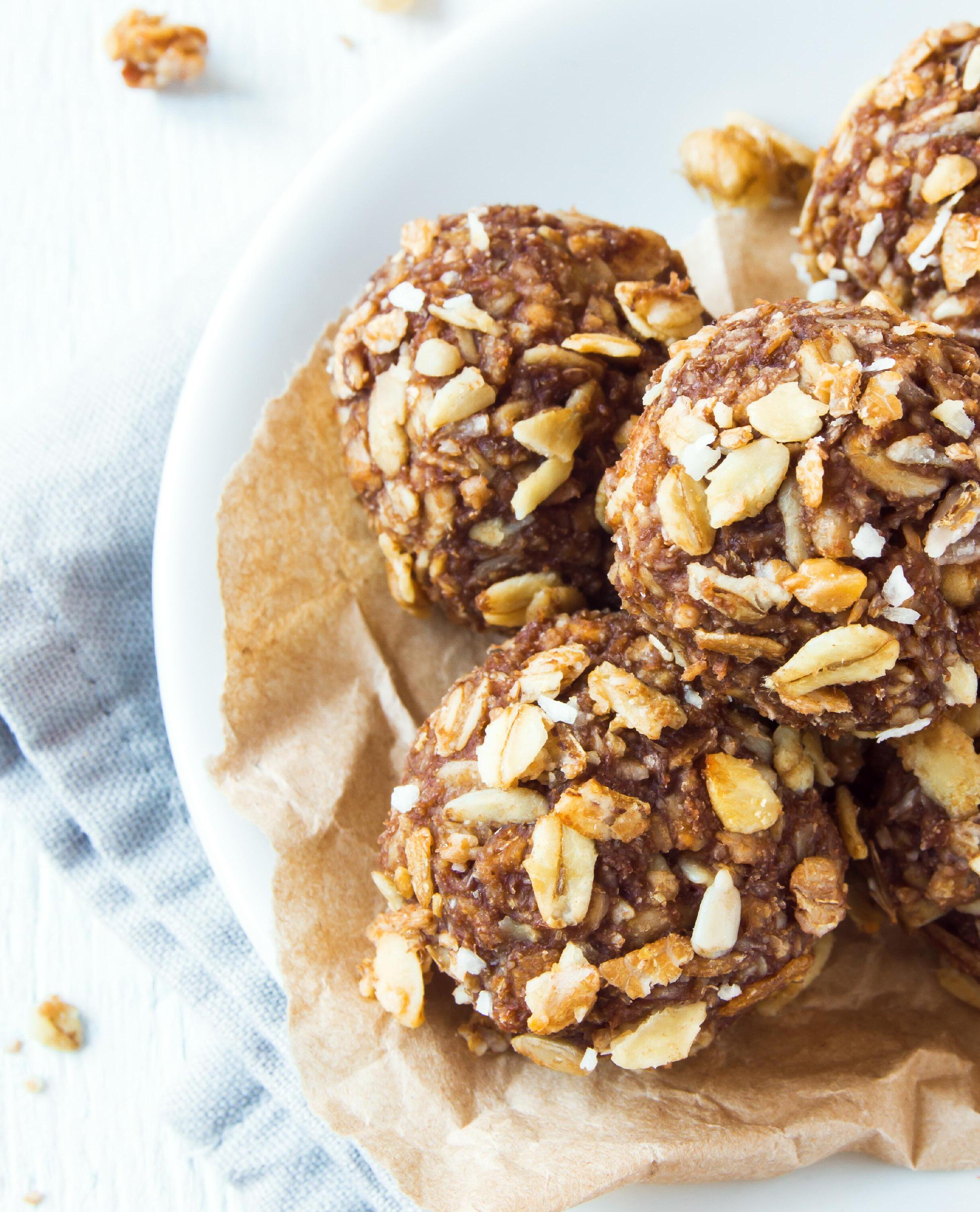
Subtly spiced and naturally sweet –perfect for winter’s slower pace
Writing | Rosalie Collins
These festive bites capture the nostalgic comfort of freshly baked gingerbread, wrapped in the familiar warmth of winter spices. High in fibre and irresistibly moreish, they bring a wholesome balance to the season’s indulgence – the kind of treat you’ll want to keep within reach for those mid-morning pauses with a cup of tea.
Winter invites us to slow down, savour the small moments, and find joy in simple rituals. So, as the chill settles in, why not embrace the season’s charm by preparing your own nourishing snacks to see you through?
Gingerbread energy bites
Makes: 14 bites
Prep: 10 minutes
Chill: 30 minutes
Ingredients
• 155g Medjool dates, pitted
• 85g rolled oats
• 1 tbsp ground flaxseed
• 2 tbsp ground almonds
• 2 tbsp smooth almond butter (or peanut butter)
• 2 tsp ground ginger
• 1 tsp ground cinnamon
• ½ tsp ground nutmeg
• Zest of 1 orange
• Pinch of sea salt
• 3 tbsp warm water
Optional: cacao powder or desiccated coconut, for rolling.

• Combine the dates, oats, flaxseed, almonds, almond butter, spices, orange zest, and salt in a food processor. Blend until a sticky dough forms.
• If the mix is a bit dry or crumbly, add a small amount of warm water. Add one tablespoon at a time until it holds together when pressed.
• Roll the mixture into small bitesized balls.
• If you are feeling ‘extra’, you could roll them in coconut or cacao powder.
• Place in the fridge and chill for 30 minutes to firm up. Enjoy!
This recipe makes 14 bites. Store in an airtight container, ready for when you’re feeling peckish.
In the UK, adults typically consume around 18g of fibre a day – which is well below the 30g recommended for optimal gut health. While ‘fibremaxxing’ has gained attention as a wellness trend, balance remains key. Modern diets, often high in ultra-processed foods and shaped by busy lifestyles, can make it difficult to meet this nutritional target. That’s where these bites come in. Made with dates, almonds, oats, and flaxseed, they offer a simple way to boost fibre intake throughout the day. Fibre acts as a prebiotic, feeding the
beneficial bacteria that support a healthy gut microbiome – a system linked with digestion, brain function, hormone balance, and even immunity. Because much of our immune system resides in the gut, a balanced microbiome plays a vital role in maintaining overall wellbeing. Fibre also helps steady blood sugar levels by slowing the release of glucose into the bloodstream, which helps sustain energy (especially useful during the festive rush). And as it promotes satiety, fibre can help you stay focused and satisfied as well. The warming spices in these bites do more than evoke holiday nostalgia. Ginger, cinnamon, and nutmeg are naturally rich in antioxidants, which help protect cells by neutralising free radicals. These compounds have been linked to anti-inflammatory, antibacterial, and antifungal benefits, offering a subtle, yet powerful, boost for overall health. Ultimately, being mindful of your snacks can make a real difference to how energised you feel each day. With these festive bites, you can enjoy the flavours of the season while nourishing your body – a small, satisfying step towards balance this winter.
Rosalie Collins is a nutritional therapist, helping people nurture their gut health, and find lasting relief from digestive discomfort. Visit the Nutritionist Resource.

How this dynamic hypnotherapy technique can inspire confidence, focus, and help you unlock your potential
Mentally mapping out the route you’re going to take to a restaurant, or rehearsing what you want to say ahead of an important meeting – these are examples of how we might already be engaging in visualisation in daily life. But its potential remains untapped. Visualisation is arguably one of the most powerful tools in solution focused hypnotherapy (SFH), allowing individuals to focus on the life they want to live. Unlike more traditional approaches that analyse the problem, SFH shifts attention towards positive outcomes, and the steps needed to achieve them. Clients are encouraged to imagine – and, to a greater extent, feel – what it would be like to live the life they desire, developing clarity, motivation, and belief in the process.
How visualisation works
The brain doesn’t distinguish between imagination and reality. When you vividly imagine a situation – a future goal, a calm space, or a confident performance – your conscious mind sets the intention, while your subconscious provides the
imagery, sensations, and emotions that make it feel real.
This is why athletes, musicians, and high performers often use visualisation as part of their training. By mentally rehearsing success, they are effectively programming their minds and bodies to perform at their best when it really matters. The subconscious treats those mental images as experiences, helping to build new pathways of confidence, focus, and control.
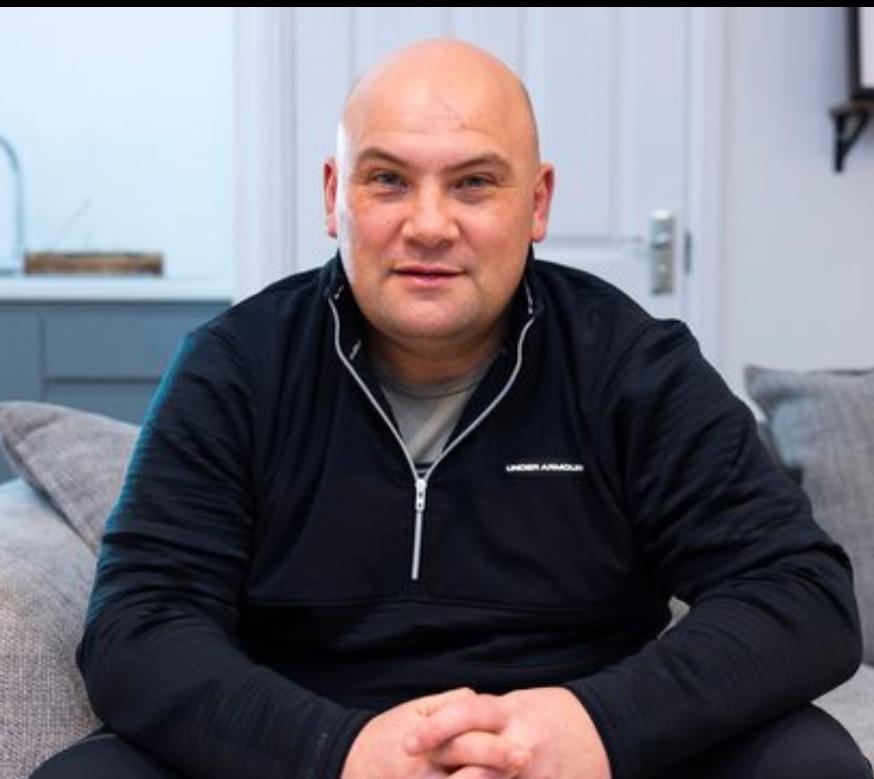
Chris O’Connor is an experienced clinical hypnotherapist, who has helped hundreds improve their lives through hypnotherapy. Get in touch via the Hypnotherapy Directory.
Visualisation forms the foundation for several powerful therapeutic techniques, including the ‘swish technique’ from neuro-linguistic programming, which helps people rapidly change automatic thoughts, feelings, or behaviours by transforming how their subconscious responds to triggers. As an example, someone who feels anxious in a certain situation might hold a mental image of that moment filled with tension and self-doubt. During a swish exercise, that image is replaced with a vivid, empowering one – perhaps showing them calm, confident, and in control. Repeating this process ‘swishes’ the old pattern
away, teaching the subconscious to associate the trigger with confidence instead of anxiety. Over time, this mental rehearsal can rewire the brain, allowing us to respond more effectively in real life. It’s a simple, yet powerful, way to build confidence and emotional resilience, as it engages both imagination and emotion –two of the most influential forces in the subconscious mind.
As a solution focused hypnotherapist and psychotherapist, I regularly work with elite athletes, helping them access the ‘flow state’ – that feeling of being completely absorbed in a task, often described as being ‘in the zone’.
The flow state occurs when your skills match the challenge ahead of you. The conscious

mind quietens, allowing the subconscious to take control. Time seems to slow, actions become fluid, and performance feels automatic. In this state, the brain releases chemicals that enhance focus, confidence, and enjoyment (dopamine, norepinephrine, anandamide, serotonin, and endorphins), making it one of the most powerful mental states for creativity, learning, and performance.
To help athletes reach this state, I often use ‘reframing’ – a technique anyone can use. It
involves shifting how the mind interprets challenges, turning the perception of pressure into opportunity, and nerves into focus. Think of it as ‘I have to do this’ turning into ‘I get to do this.’ Combined with visualisation, reframing helps clients to access their natural ability to perform freely, without interference from overthinking or self-doubt.
The following exercise can improve focus, confidence, and calmness, particularly during moments of stress or overwhelm.
1. Play relaxing music. Take a few minutes to breathe deeply, and allow your body to unwind.
2. Picture your goal or event – something you want to perform, improve, or handle with confidence.
3. Engage all your senses. Imagine where you are and what you’re doing. Notice what you’re wearing, or any physical sensations. Feel the confidence, calm, and control in your body.
4. Visualise it in slow motion 11 times, then imagine it happening in real-time on the 12th. Don’t rush this – make every detail as vivid as you can.
5. Repeat the real-time version 12 more times. Keep your focus on how it feels to succeed.
6. When you’re done, congratulate yourself. Take a moment, breathe, and open your eyes, feeling calm, confident, and centred.
This practice can be surprisingly powerful. It’s best used when your mind is clear, as visualisation works most effectively when the brain is relaxed and receptive.
Visualisation isn’t about pretending or wishful thinking –it’s training the mind to recognise success before it happens. When combined with hypnotherapy, or techniques like ‘the swish’ and reframing methods, it becomes a tool for lasting change, helping you access the focus, confidence, and calm you already hold within. With regular practice, it can become one of the most empowering habits you develop.


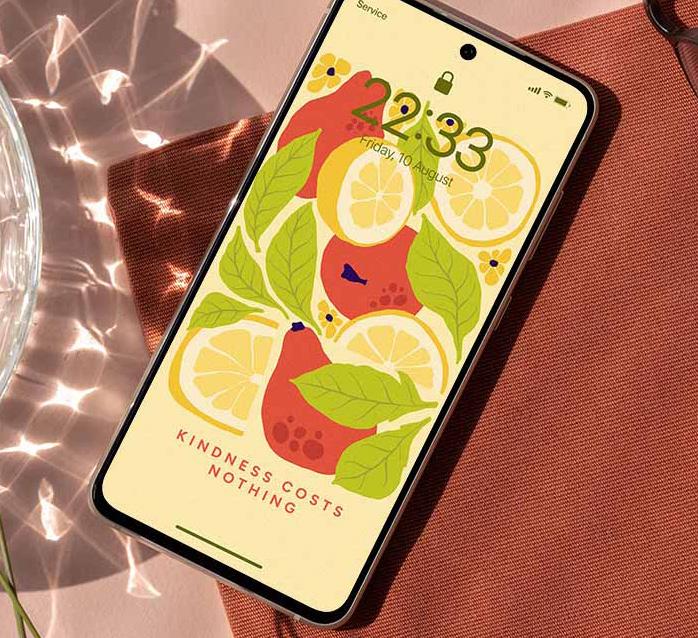
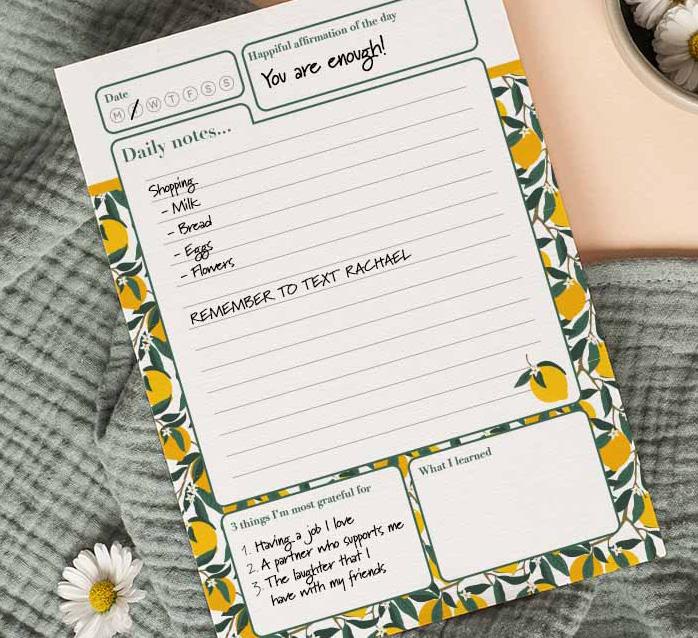
• Enjoy guided journaling booklets, seeded affirmation cards, and beautifully designed notebooks – completely free!
• Award-winning, psychotherapist-reviewed and approved content
• Discover fascinating features, science-backed practical tips, inspiring stories, and expert advice
• Print-exclusive guided journaling pages in each edition
• You’re in control, so cancel any time
And remember, the longer you subscribe, the more rewards you’ll receive. So roll with it, and enjoy the monthly delivery of positivity as a reminder to make some much-needed time for you.
Happiful monthly rolling subscribers now receive thoughtfully crafted gifts at renewal milestones, meaning that committing to your wellbeing is truly rewarding – in more ways than one! Join today at shop.happiful.com


What would you do if your doctor prescribed you a walk in the park? New research suggests healthcare is heading outdoors…
Writing | Fiona Fletcher Reid Illustrating | Rosan Magar
Imagine leaving your doctor’s sugery with an unexpected solution – alongside traditional medicine, you’re instructed to visit your local greenspace, or watch the clouds from your bedroom window. It might sound unconventional, but ‘nature prescriptions’ have recently been trialled by the Royal Society for the Protection of Birds (RSPB), with surprisingly successful outcomes.
What is a ‘nature prescription’?
RSPB nature prescriptions are a way for health professionals to talk to patients about how they can use nature as a tool for wellbeing. Delivered by professionals such as doctors, link workers, occupational therapists, and psychiatric nurses, they’re designed to connect people with nature in a way that is meaningful and suits their lifestyle.
Although not yet widely available, a pilot study conducted across five Edinburgh GP surgeries between 2020–21 highlighted two factors that make nature prescriptions particularly effective. Firstly, the formality of being ‘prescribed’ an activity gave participants “permission and motivation to take time out of their day for some form of engagement with nature”. Granting permission, particularly from someone in a position of authority, seemed to increase the chances of people giving it a go. Secondly, the prescription was delivered via a leaflet with a seasonal calendar of nature activities, offering information on nearby nature, as well as links to local parks, walking paths, and groups, which allowed professionals to confidently approach the topic, and create a personalised plan.
One of the exciting things about the project is the wide range of physical and mental conditions that were treated –including anxiety, depression, diabetes, high cholesterol, chronic obstructive pulmonary disease (COPD), fibromyalgia, menopause, and sleep apnoea. Nearly three quarters (74%) of the patients reported that they had seen benefits, and 87% said they were likely to continue using their prescription.
Someone who is well-versed in the health benefits of nature is Dr Amir Khan, who works for the NHS, and explains that our intuition often nudges us outdoors when we need it most. “Humans have evolved alongside nature for millennia, so it’s inherent that we want to connect with it,” he explains. “There’s actually a scientific term for this >>>

theory, the ‘biophilia hypothesis’, which means we actively seek out nature, for example listening to birdsong, because it makes us feel better.”
The idea that nature can shift our mindset isn’t just a hunch; 2020 research, published in the International Journal of Environmental Research and Public Health, reveals that nature activities actually increase serotonin levels (also known as a ‘happy hormone’) in the brain.
More than a general mood booster, a 2018 review by the University of Exeter found evidence linking exposure to natural environments to a reduction in stress, fatigue, anxiety, and depression. The same research found a range of other positive physiological outcomes, including lower rates of type 2 diabetes, improved heart rate, blood pressure, vitamin D levels, recuperation rates, and cortisol levels.
The best medicine Nabila Gardner, who is the director of Ways for Wellbeing UK, says typically its prescriptions are quite specific, detailing the type of activity, frequency, duration, location (if possible), and sometimes include a partner organisation or resource for support. Thankfully, seasonal changes don’t have to act as a barrier to taking part.
“Recommended winter activities often include daylight exposure through short, bright walks or garden work, and engaging the senses with winter foliage or birdwatching,” she says.
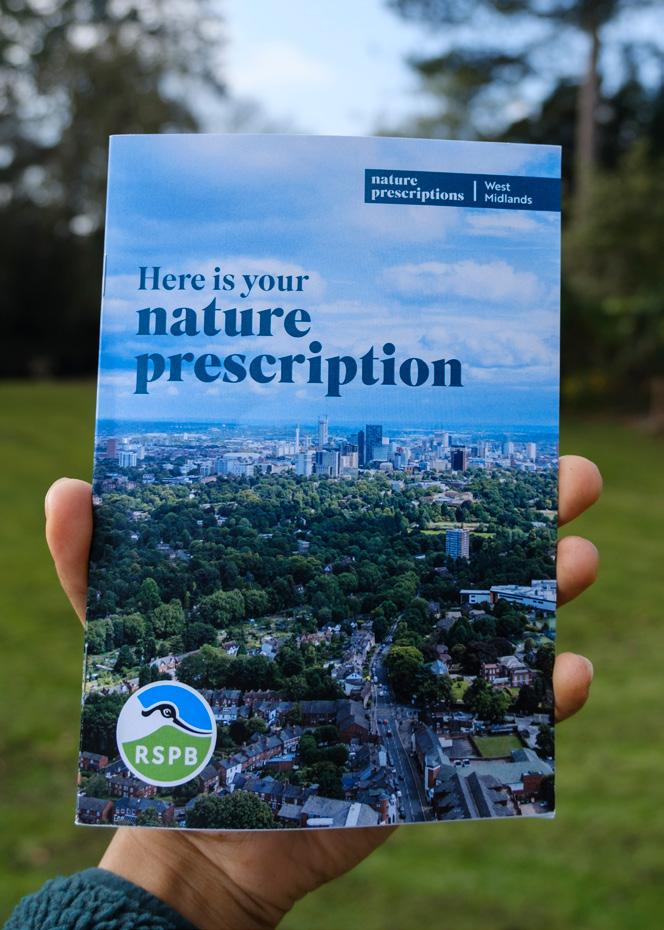
Of course, patients can initially be skeptical. Emily Hough, who is affected by complex posttraumatic stress disorder (C-PTSD), anorexia, and endometriosis, was introduced to nature prescriptions by an occupational therapist.
“I didn’t believe it would help. But she encouraged me and explained that I might be surprised by the calm I could find, and how it might take my mind off the difficult day-to-day routine of being an inpatient,” says Emily. “That gentle push was the start of a shift for me. [...] Eventually, it became one of the most important parts of my recovery.”
A far cry from the monotony of the ‘silly little mental health walks’ that many of us became familiar with during the Covid-19 lockdowns, Emily was prescribed the structured activity – something that makes nature prescriptions uniquely beneficial – of planting, and tending, to a sunflower.
Tune into nature with these suggestions from RSPB
• Open your window and listen to the sound of rain
• Draw, or write a poem about, your favourite flower
• Look for the first star appearing in the night sky
• Get to know a city tree and notice how it changes through the seasons
• Follow the journey of a leaf floating downstream
• Volunteer at a community garden or clean up
• Head to your favourite hilltop and take in the sunrise
“At first, it felt like just an activity to pass the time, but as the days went by, I found myself checking on it, making sure it had enough water and sunlight, and watching it grow taller and stronger,” she explains. “When it finally bloomed, I felt an overwhelming sense of joy and achievement.”
She also watched with curiosity when bees came to feed on her flower, demonstrating her contribution to the wider ecosystem. “That realisation was so powerful,” she says. “I wasn’t just caring for nature, I was part of it. For the first time, I felt connected and grateful to be alive, surrounded by something so magical and resilient.”
It’s these small, intentional acts that make nature prescriptions so effective. Like many people, Jayne Ison had a busy work and family life, and didn’t believe she’d be able to find the time to connect with nature. But now, it’s become part of her routine. >>>

“It doesn’t have to involve whole weekends walking, it could be as simple as turning off my phone for 20 minutes, sitting on my balcony next to my flower boxes with a cup of tea, and looking at how green the leaves are on the trees outside, watching the branches swaying,” she says. For those who lack transport, have mobility issues, or have anxiety about leaving the house, knowing that nature can be enjoyed indoors can be a relief. Jayne even went on to buy her 75-year-old mum a bird feeder, so that she, too, could enjoy the
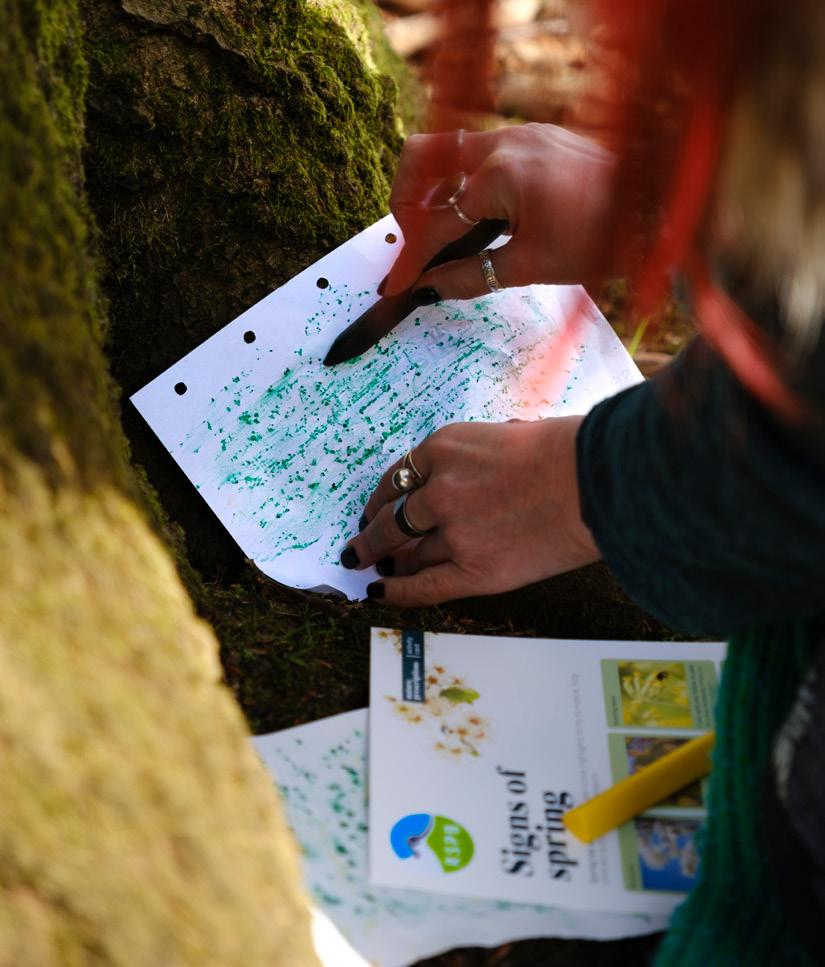
I wasn’t just caring for nature, I was part of it
benefits of interacting with nature while observing from her home.
In an ideal world, everyone would have access to nature, and have the resources to cultivate a deep connection to the world around them. But, as mentioned in RSPB’s report on their pilot study: “We now face a nature and climate emergency which has exposed growing disconnection with nature.”
Yet, through the simple act of giving someone a permission slip
to pause, listen out for birdsong, or watch the snow melt on a tree stump, nature prescriptions have the potential to bridge the gap. They remind us that healing can be found in the rustle of leaves, or the first green shoots pushing through winter soil. By making nature a part of healthcare, we’re not just treating the symptoms; we’re nurturing a relationship that sustains both human wellbeing and the world itself. And in doing so, we might just discover that the best medicine has been waiting outside our door all along.
Meet the different types of memory, and what they’re used for
This relates to recent information that our mind stores, and allows us to use in the moment – such as a one-time password you need to input, or following the instructions while assembling a Lego set. It’s temporary, lasting up to about 30 seconds, and can contain around five to seven items. Without active effort, such as repeating it to ourselves or connecting it to other memories, our minds can delete this information to make way for more.
This is the information our brains retain, converted from short-term memory – a bit like backing up your devices to the Cloud. It can store much more information to draw on as needed, helping us to navigate the world, made up from episodic, semantic, and procedural memories.
This can feel like a more detailed, storytelling type of long-term memory, encompassing feelings of an event as well. It could be
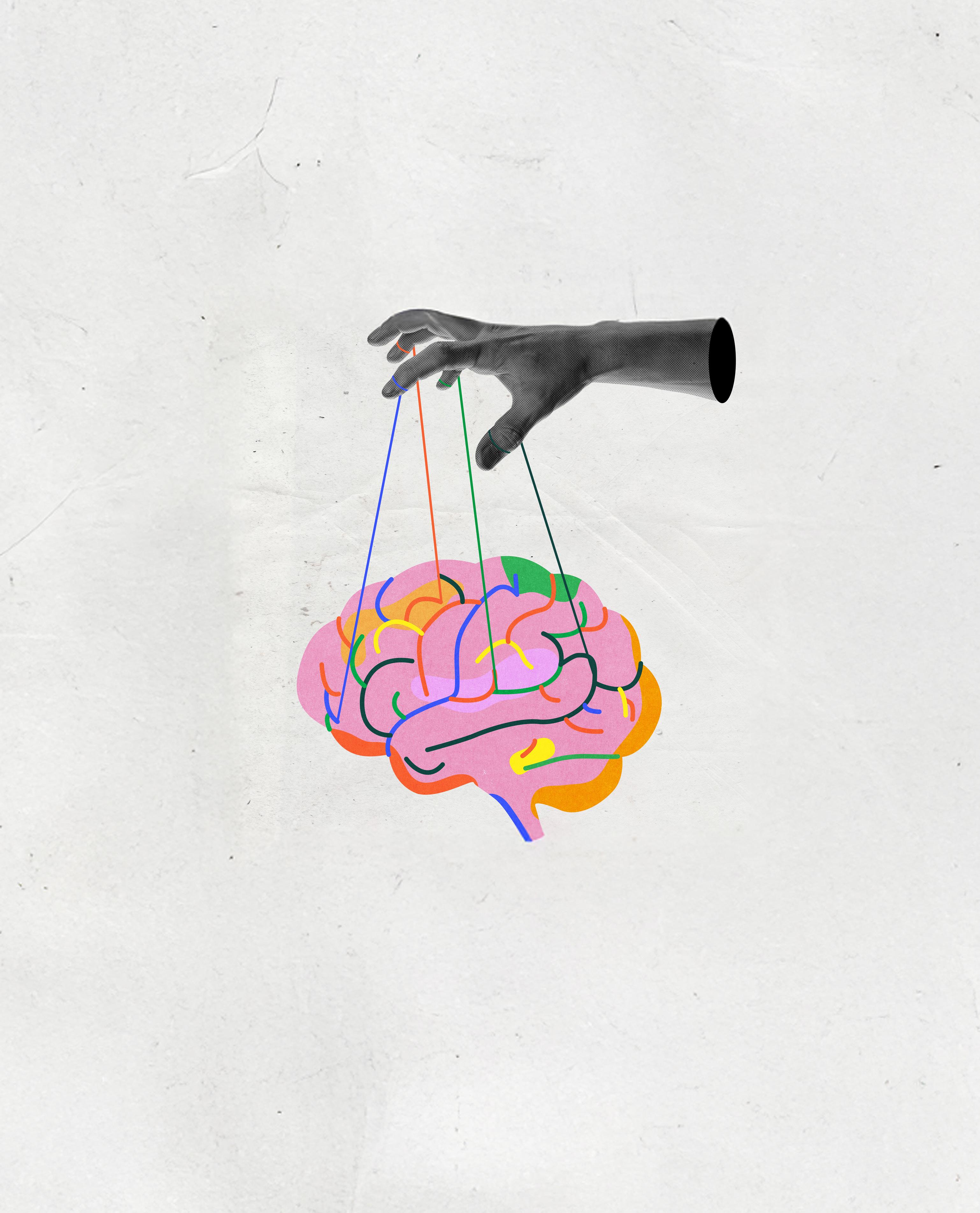
recalling the specifics of the meal you ate at your friend’s celebratory dinner last month, or the emotions you went through during your first break-up. It can be quite personal to your life and experiences.
Think of this as your long-term knowledge library – curated from lessons you were taught across your school years, along
with insight you’ve picked up throughout life. It’s a bit like your general knowledge round at a pub quiz, allowing you to remember facts and meanings –ranging from what other film you recognise a particular supporting actor from, to the concept of gravity, or the capital of Norway.
Another type of long-term memory, consider this the home of your skills and actions that become more automatic and unconscious over time – essentially, how you know to do things. It might be your ability to play the piano, or how to ride a bike.
This differs slightly from ‘short-term memory’, because the temporary information you’re storing might have been ‘manipulated’ or is being used in conjunction with something else. You use it consciously, such as calculating your savings from a store’s percentage discount offer, or recalling directions you’ve just been given.
From a magical outdoor activity to a podcast that offers a calming escape, we’ve hand-picked 10 recommendations to transform your wellbeing
Writing | Lauren Bromley-Bird
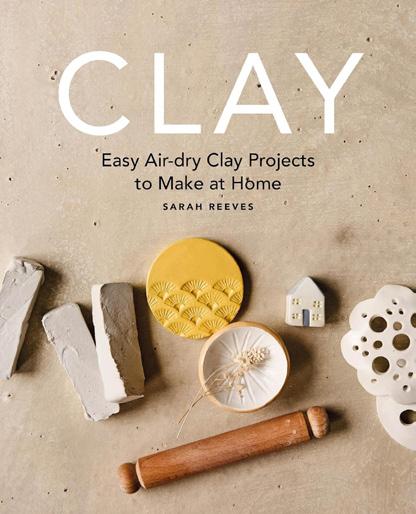
Recycle your stamps for MS Society
Clay: Easy Air-dry Clay Projects to Make at Home by Sarah Reeves
Aside from having therapeutic benefits, air-dry clay is more affordable than traditional clay because it doesn’t require specialist equipment to use, making it a more convenient at-home craft. In Sarah’s guide, she shows us how we can get stuck in with making minimalist home pieces, from coasters to bookends. (Out now)
1 2
Go on a light trail
That’s right, recycling your used postage stamps can actually help raise funds for MS Society, a deserving charity that helps those with multiple sclerosis. All you have to do is send your cut-out stamps to Derek Dawson – who is continuing the wonderful fundraising work of his father, who died in 2012 – to sell on. (Get involved at mssociety.org.uk)
3 4 5
‘Big Zzz: Sleep Stories for Grown Ups’
If you’re struggling to catch those necessary Zs, check out these short stories designed to help you meditate after a busy day, and drift into a peaceful slumber. You might find yourself on a train travelling through a sleepy countryside, or sipping tea in a midnight bakery. (Available on all podcast platforms)

The dark winter nights call for grand stately homes and botanical gardens to be transformed into dazzling trails illuminated by light, and it’s magical in more ways than one! Wander under twinkling tree lights or stroll through sparkling tunnels, and let the community festivity commence. (Search for local illuminated light trails near you.)
Velzy Dahl
Turning silly conversations, that have been overheard by strangers, into fun comic-style anecdotes is illustrator Velzy Dahl’s specialty. Her lighthearted series will leave you feeling charmed by the innocent nuances of these everyday interactions, and, in turn, make you more hopeful about the world. (Follow on TikTok @velzy_dahl)

6
Discover different world flags
One unfamiliar, but interesting, hobby is vexillology – the study of flags. With 195 unique flags from countries around the world, there is plenty of history and culture to learn about. Memorising them is also a great way to train your brain, and a handy nugget of knowledge to ace your next pub quiz! (Find tutorials on YouTube)
9
Inside Our Minds
7
When you’re worried, sometimes giving yourself the space to acknowledge those feelings, and why they’re coming up, is enough to help free yourself from ruminating about it. Worrydolls provides that space. The app encourages you to let go of what’s on your mind by telling a friendly virtual worry doll all about it. (Download on the App Store or Google Play)
8
It’s an accessible full-body workout trend that evolved from military training, but it’s not as intimidating as it might sound. In fact, it’s something many of us already do without realising. The idea is to walk or hike (whichever you are most comfortable with), carrying weight on your back to improve strength.
(Search online for rucking tips)
Neurodiversity is experienced differently by each person. So, we love that Chris Packham, who has autism himself, has teamed up with other neurodivergent people to help paint a picture of how exactly their brains work, and how they see the world differently, through the power of film. (Available to watch on BBC iPlayer)
10
Affirmation colouring book
For those who struggle to internalise affirmations the usual way, this affirmation colouring book could be your solution. Jampacked with illustrative pages and phrases to colour, it’s a wonderfully creative way to add an additional layer of depth to your practice, while unwinding from a busy day. (keepitbright.co.uk, £10)
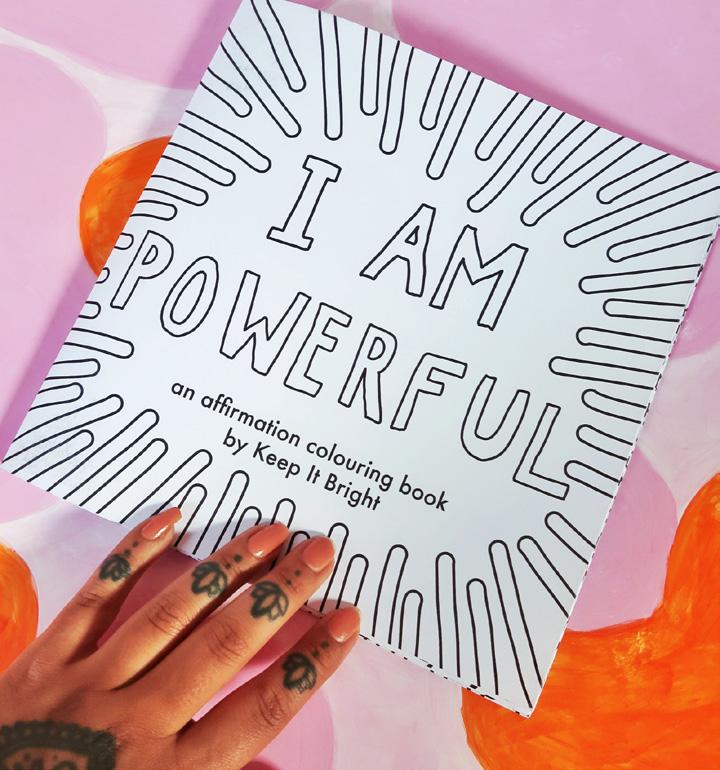
For your chance to win, simply email your answer to the following question to competitions@happiful.com
Which colour is commonly associated with a sense of calm?
a) Red
b) Orange
c) Blue
*Competition closes 31 December 2025. UK mainland only. Good luck!

I know nothing with any certainty, but the sight of the stars makes me dream
Vincent Van Gogh
We sometimes think of grief as a personal experience, but a sense of loss can also occur on a larger scale, affecting entire communities
Writing | Samantha Redgrave Hogg
Grief touches everyone at some point in their life, whether through the personal loss of a loved one, a relationship, a job, or even a sense of self. But one type of mourning that is sometimes overlooked is the shared experience of loss following tragic events that affect many people simultaneously. This is known as collective grief.
Despite grief being universal, the intricate nature and depth of grieving, as well as the pressures and misunderstandings surrounding the process, may sometimes live beyond the reach of language. Perhaps because grief, in any form, feels tricky to translate at times, and isn’t something we always find easy to discuss in today’s society.
While I don’t pretend to hold all the solutions here, together we can, at the very least, create an opening for feelings of shared loss
to be recognised, and find ways to cope when things seem too big to carry alone.
What is collective grief, exactly?
Collective grief happens when a group of people experiences a shared loss or trauma. An example is when a catastrophe, such as death, significant change, war, natural disasters, or the loss of a high-profile individual, affects a group of people, including a community or nation.
“Collective grief is the shared emotional response to a loss that reaches beyond individual experience,” says psychotherapeutic counsellor Sarah James, who supports people through grief and life transitions. “It arises when an event or loss with widespread impact touches many lives at once, creating a network of mourning, reflection and remembrance.”
It’s important to note, here, that collective grief may affect specific ethnic or racial groups more profoundly, due to the increased risk of social injustices, as well as historical oppression and unequal exposure to loss.
So, how can collective grief feel? As with all types of grief, there are many ways collective grief can manifest emotionally, such as shock, numbness, powerlessness, sadness, confusion, and anger. These symptoms can occur after a single traumatic incident, or while expecting worsening conditions during a global crisis, such as a war or pandemic. This is a form of anticipatory grief, which is the experience of expecting a future loss, and can also encompass ecological grief, in response to anticipated environmental destruction, Sarah explains. It’s worth noting that just because the grief is shared between a greater number of >>>
While grief is often painful, experiencing it collectively can foster solidarity, empathy, and a sense of shared humanity
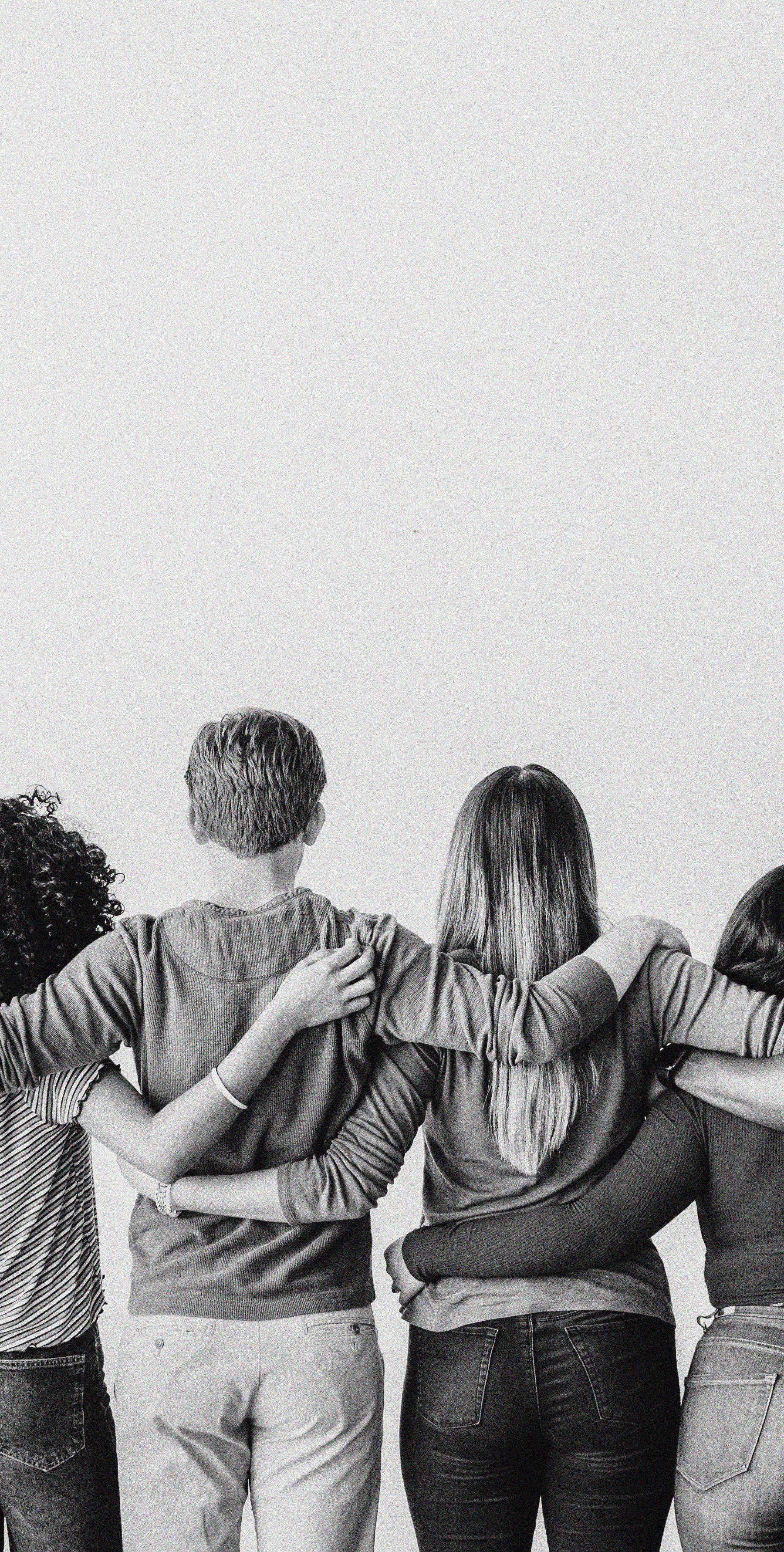
people, that doesn’t mean it dissipates more, or is felt any less strongly by one particular individual. So, know that however the collective loss impacts you emotionally, your feelings are valid.
What’s also becoming clearer is that grief can affect the body, as well as the mind. In fact, a recent Danish cohort study (with a 10-year follow-up), published in Frontiers in Public Health, shows that prolonged grief is associated with long-term health complications, including increased mortality risk, and higher use of health services.
Why do people grieve together, and are there benefits?
Grieving side-by-side – whether it’s feeling sad when a public figure passes away, anxious after a terrorist attack, or helpless when witnessing suffering – affirms the vulnerable experience of our world no longer feeling familiar, the same, or even safe.
“Grieving together allows individuals to witness and validate emotions in a broader context. It’s a natural human response to seek connection and understanding in moments of profound loss,” Sarah says.
Mourning this pain collectively through external expressions of grief, such as rituals or ceremonies, as well as “reflection, movement, song, or storytelling”, can be an active outlet to honour that loss. Additionally, it may even act as a catalyst for social change or action, while also nurturing a
sense of connectedness between those impacted.
“Collective mourning can help people feel less isolated, offering reassurance that the emotions they’re experiencing are both real and shared by others. [...] It reminds us that we are part of something larger, and that our feelings are acknowledged and held by others. While grief is often painful, experiencing it collectively can foster solidarity, empathy, and a sense of shared humanity,” Sarah says.
As someone who seeks reassurance and wisdom from the natural world, we can, perhaps, understand the concept of grieving together through the lens of the seasons and the land.
A solitary tree might be more vulnerable to strong winds or diseases; however, a community of trees – with intertwined roots and networks, sharing nutrients and warning signals – protects and nourishes the forest.
So, when we come together to acknowledge loss, we strengthen our truth and resources over time, through the support of a wider group.
Coping with collective grief can begin with acknowledging the experience. Sarah explains: “Naming the loss, even when it feels abstract or intangible, allows individuals to engage with it consciously, rather than letting it remain unspoken.”
This recognition will help you be authentic and present in your experience of collective
grief, which can release some of the unspoken expectations around the process. There is, after all, no right or wrong way to grieve in any context, and there is certainly no linear or fixed timeline, so finding ways to work with, and honour, your loss – whether that’s through communal approaches, talking with friends, self-compassion, self-care practices, or seeking professional help – can help you navigate its unpredictable waves.
“In my work as a therapist and circle facilitator, I have seen how creating safe, held spaces for people to reflect together can support this process,” Sarah explains. “Within these spaces, individuals can share their experiences, listen to others, and explore their emotions in a nonjudgemental way.”
While it’s OK to feel sad in the wake of tragic events, and justified when that feeling is widely recognised, sometimes we may feel detached or distant from what’s happening around us, as well as question how we can help others who are grieving.
Sarah talks about the power of self-awareness and observation here: “Observing collective grief, even when it does not directly affect us, can deepen empathy and awareness. It’s natural to experience a range of responses when others grieve, including compassion, curiosity, or even discomfort.”
If you are feeling a sense of discomfort, try not to put pressure
on yourself to ‘fix’ this, or put on a brave face. Collective grief can sometimes trigger past grief or bereavements. And while social media platforms connect people during times of loss, prolonged exposure can feel overwhelming, which may ultimately have a numbing – or, alternatively, a consuming – effect.
“Acknowledging these feelings allows us to engage thoughtfully rather than detach from, or dismiss, what is happening around us,” Sarah says. Because, no matter how we experience loss, we can always find common ground, or a point of connection, in the act of coming together. And if you’re wondering what to say when witnessing someone you care about experience collective grief, speaking with intention and care, such as, “I’m here if you want somebody to sit with you during this painful time,” can be a helpful way to validate their emotions.
As Sarah concludes: “Collective grief, in all its complexity, highlights our capacity to feel, share, and support one another. It reminds us that loss, while deeply personal, is also a communal experience.”

Sarah James is a psychotherapeutic counsellor and holistic practitioner. Connect via the Counselling Directory.
When your mind is moving too fast to handle, try these tips to quiet the mental noise
Writing | Emma Victoria Stokes Illustrating | Rosan Magar
Does your brain have a million tabs open? Does it feel like each thought crashes in before the last one can finish, spiralling into worst-case scenarios? If this sounds familiar, you might have experienced ‘racing thoughts’ – a common, but exhausting, occurence.
Different from overthinking, which focuses repeatedly on one issue, racing thoughts can make it feel like your mind is stuck on fast-forward, jumping quickly between different topics without a break. Sometimes, sudden and unwanted intrusive thoughts can also occur, which may feel unsettling.
Racing thoughts can happen during times of heightened stress or anxiety, and can be associated with other conditions such as depression, attention
deficit hyperactivity disorder (ADHD), and bipolar disorder. What’s quite telling is, according to a 2024 survey of 2,144 Brits by employment specialists Kickresume, 70% of people revealed they experience ‘Sunday scaries’ (worrying about the week ahead), with 53% specifically having racing thoughts about Monday’s tasks.
“It’s important to acknowledge that these different patterns of thinking are normal, and happen to everyone,” psychotherapist Sedef Salim explains. “And understanding the differences can help you feel more in control. With the right support, racing thoughts can be managed using various therapeutic techniques.”
Getting to the root of your restlessness is the key first step.
“It can be helpful to acknowledge what might be happening for you in that moment,” says Sedef. “What are you responding to? Has something triggered a worry? Connect with the part of yourself that needs acknowledgement and reassurance.”
When your thoughts start to spiral, try this simple cognitive defusion technique from acceptance and commitment therapy (ACT). Instead of saying, ‘I messed up that meeting,’ reframe it as, ‘I’m having the thought that I messed up that meeting.’ This subtle shift creates distance between you and the thought, allowing space to observe without judgement. Our brains can sometimes treat stressful thoughts as facts, but rationalisation techniques like this one can help you gain perspective.
Grounding, but with a twist
Grounding works by pulling focus away from that overstimulated state and anchoring you in the present. A well-known method is the 5-4-3-2-1 technique, which involves taking note of your surroundings through connecting with all five senses.
To make it more effective, go beyond naming what you sense, and describe each detail more vividly. You might notice a yellow mug with a wobbly handle, or feel the smooth texture of the wooden table with a rough patch near the edge. This level of detail requires more mental engagement, which helps interrupt racing thoughts.
“Grounding calms the heightened state of arousal that drives racing thoughts,” explains Sedef. “Our thought patterns are usually tied to things we’re worried about, which trigger emotional responses, and put our nervous system on high alert. This can become a vicious cycle, as the more stressed we feel, the harder it becomes to think clearly, often leading to catastrophising.”
a ‘worry window’
Giving your brain permission to worry might sound counterintuitive,
but it can genuinely calm your thought processes. Set aside a specific time period each day, of around 30–60 minutes, where you allow yourself to worry. This gives your brain dedicated time to process concerns, rather than letting them spill uncontrollably into all parts of the day. This cognitive behavioral therapy (CBT) technique works by containing anxious thinking within a manageable boundary. Over time, it breaks the habit of constant rumination, allowing you to focus on the present moment, and engage in problem-solving when appropriate.
When your nervous system is in overdrive it’s hard to think clearly, so try stimulating the vagus nerve (which acts as a communication link between your brain and body) to encourage calm. Try humming a low, steady note for 60 seconds, or make an extended ‘om’ sound. The vibration, combined with the lengthened exhale, signals your body to move out of fight-or-flight mode and into a relaxed state.
Physical activity regulates the nervous system, and is one of the

Sedef Salim is a psychotherapist, clinical supervisor, and trainee counselling psychologist. Connect via the Counselling Directory.
most effective and accessible ways to reduce mental overwhelm. Alongside lowering your cortisol levels, exercise also increases the production of endorphins, which are your brain’s natural mood boosters. Even if you’re not consciously thinking about it, you’re activating both hemispheres of the brain, which can help bring clarity and make you feel happier. Whether it’s dancing, a quick walk around the block, or lifting weights at the gym, moving your body can help you work through tangled thoughts, and return to a more focused state. So, limber up and find a movement routine to help press pause on racing thoughts. Remember that simply recognising what’s happening is an important first step in regaining control. If your thoughts ever feel too difficult to manage on your own, speak to your GP as they can check for any underlying issues, and guide you towards the right support.
What to do when your wider network doesn’t cut ties with an ex-friend or partner, or you find creating space to heal isn’t as easy as you hoped
Writing | Michelle Elman
It used to be so much easier to move on. When a relationship came to an end, your ex could cease to exist in your world. You were given the peace and space to grieve where needed, and, more often than not, you wouldn’t be confronted with their presence invading your personal space.
Getting over my first ever relationship was that way. We didn’t have social media, or mutual friends, and so it was easy to not stay in touch. There weren’t constant reminders that he was moving on, or how he was moving on, or even who he had moved on with. In the past 10 years, I only ever heard an update about his life when a friend of mine happened to bump into him in the street. Nowadays, you’d be lucky to go 10 days without seeing some sort of digital footprint from them intruding upon your daily scroll, and I believe this inability to have genuine space from an ex slows down the healing process.
Whether it’s a new post notification, or suddenly seeing them tagged in a mutual friend’s
photo, these unpredictable updates while you are trying to heal from cutting someone out of your life (or them cutting you out) can feel intrusive and unavoidable – popping up on your phone, at any time, and even in the safety of your own home. And it can be hard not to spiral, letting your thoughts run away and piece together a narrative of what’s transpiring, twisting it into something that can do more harm than good. You might see a post of them socialising, and tell yourself they’re not as affected by the relationship ending as you are. Or find out they’ve gone to see a band you introduced them to with someone else, and feel like they’ve replaced you already. These are all assumptions we tell ourselves, based on a snapshot of their life.
This is why I am such an advocate for blocking your expartners and ex-best friends – if they don’t get access to you in your real life, then they also don’t need access to your online one. And let the people in your circle know it, too! While you can’t control whether loved ones continue
their contact with the person in question (e.g. by still following them on Instagram), you can share your boundaries by telling them that you’d prefer to not know any details of their activities.
This can be tricky to navigate, given that the people we bring into our lives often develop their own connections with our friends and loved ones, too. While it can be uncomfortable to know that their bond doesn’t necessarily end when yours does, I believe we can’t dictate whether friends and family stay in touch with an ex.
This can be tough to process, especially if things didn’t end amicably, or you feel your connection is stronger, and so you assumed they would choose ‘your side’. But the reason I don’t believe in choosing sides is because I wouldn’t want anyone else making me choose one. In reality, we all have different boundaries, and so the reason for a relationship or friendship ending might not be something that matters as much to them as you – and vice versa. Over the years, this has meant I have friends who are still in

contact with people I’ve chosen to cut out of my life, and that can be hard to see. If how this ex-friend or partner behaved is outside of my morals, I may question the relationship I have with the mutual friend, if it illuminates values that I might not want from a person that I choose to have in my life – but at the end of the day, it has to be my decision. We have to all learn our own lessons with the people in our lives, and
respect it when people make a different choice to us.
For those circumstances where mutual friendships continue, the main thing is to set boundaries. People often share unsolicited details without thinking, or because they might assume you would rather hear it from them, but if that is unhelpful to you, let them know. It can be as simple as saying ‘I appreciate you are trying to help, but, right now, what
I really need is to know as little about them as possible.’
Likewise, it’s important to ask the people in your life to respect your boundaries in terms of passing on pieces of information about your life. Your heartbreak is not their personal gossip column, and we live in a culture that is too normalised in talking about each other behind closed doors – so we need to break that pattern by confronting it head on. If you’ve not directly mentioned this, it can be easy for others to claim naivety, whereas if you have specifically said you’re sharing information in confidence, it is a lot harder to break a boundary that they’re aware of.
If your boundaries aren’t respected, then you have to decide the consequences. Perhaps, the outcome is that you no longer trust that person with information you care about, or that you are more selective about who you keep around you in this healing period.
Navigating the network of mutual contacts and friends can absolutely exacerbate the heartbreak you are experiencing, and that’s why it’s so important to stand up for yourself, and voice what you need in order to help you process and move on.

‘Bad Friend: Why Friendship Breakups Hurt and How to Heal’ by Michelle Elman is out now (Renegade Books, £20)

A lot of people associate socialising with drinking, but embracing sobriety or wanting to reduce your alcohol intake doesn’t mean you have to miss out on fun
Writing | Luke Clark
Picture it: your local pub on match day, laughter echoing as you sip on your pint. Or maybe it’s a birthday party, and someone’s already topped up your prosecco before you finish your first glass. Perhaps you’re curled up on the sofa, takeaway in hand, with a deep red swirling in your glass after a rough week. Now, imagine all of those moments without any of the alcohol.
For some, the thought feels impossible. The booze is baked into these moments like gravy
on a roast dinner, so if your first thought is, “I couldn’t get through that without a drink,” I get it. I’ve been there. But I promise you: it is doable. It’s just not always easy. For me, sobriety has become a superpower. Not because I have suddenly mastered every social situation, but because I have discovered new activities that I genuinely love, like wild swimming, running, and getting experimental in the kitchen. I’ve started leaning into things I used to ignore. I’ve found peace in quiet mornings, energy
I didn’t realise I was missing, and a weirdly satisfying love for reading the kind of self-help books I used to roll my eyes at. Do I still head to the pub? Yep. Do I go to weddings? Absolutely. However, I experience them differently now, and I’d argue better, in many ways.
One of the most nerve-racking sober moments I’ve had was attending my first wedding without consuming any alcohol.
For me, sobriety has become a superpower. Not because I’ve suddenly mastered every social situation, but because I have discovered new activities that I genuinely love
It was my brother-in-law’s big day, and I knew the booze would be flowing. I was dreading it. So, I prepped. I rang the venue ahead of time to check if they served alcohol-free beer (they did). I also brought my own alcohol-free drinks, and stashed them in the boot of my car. I stuck with people I knew wouldn’t be knocking back pints. I drove, which gave me an escape plan and a bit of control. Most importantly, I opened up to my partner about how anxious I felt going into the day. The result? I had a brilliant time, I made new mates, and I remembered every moment.
Another memory that sticks out was going to gig completely sober – Run the Jewels at Brixton Academy, in London. I was also totally alone. Normally, I’d have had a couple of pints pre-show, and then topped up between acts – especially when there wasn’t a distraction of company. But this time, I didn’t.
I worried I wouldn’t enjoy the atmosphere or feel the same high. But guess what? I remembered every single song, every lyric, every beat drop.
I wasn’t dehydrated. I wasn’t distracted. And I didn’t spend half the night queuing for the loo. I’d say that’s a win-win situation.
I’m not the only one navigating this shift in sober living. In 2022, an NHS Health Survey for England found that 25% of 16 to 24-year-olds were teetotal – the highest percentage of any age group. Health, mental wellbeing, and hangover-free Sundays, are big motivators. Social media’s role can’t be ignored either. It’s become a powerful mirror, showing us the impact of alcohol on our lives.
In a broader look, about 16% of men, and 22% of women, identify as non-drinkers, according to the same NHS survey. And, perhaps surprisingly, in many social groups, it’s the non-drinkers who now choose the venues.
The ‘Raising the Bar’ Everleaf X KAM report revealed that two-thirds of adults say sober friends influence where they go out, which rises to 85% of 18 to 24-year-olds, often picking places with solid alcohol-free options.
We’re also seeing alcoholfree drinks take centre stage at festivals, in supermarkets, and restaurants. Big chains are finally cottoning on, and it’s about time.
Still, the road isn’t always smooth. More than half of UK drinkers admit they’ve used alcohol to help with stress or
anxiety, according to a survey by Alcohol Change UK, but 44% say it actually made their mental health worse. Add to this the findings of a 2020 YouGov survey, which highlighted that 12% of Brits experiencing loneliness also report drinking to cope.
Whether it’s your first dry Friday night out, or a big family bash, here are five top tips on what’s helped me enjoy socialising while sober – that might just help you, too.
1. Find your favourite alcohol-free alternatives
Nowadays there’s a whole world of quality 0% beers, proseccos, wines, and spirits at your disposal. Test a few to find what you like. Trust me, sipping a wellmade alcohol-free G&T feels just as good with mates around. A decent glass of 0% red with your dinner hits the spot. Plus, they’ve come on massively in the last couple of years.
2. Talk it out before you head out
Whether it’s with your partner, sibling, or a friend, have a chat about how you’re feeling beforehand. Playing out the scenario can seriously calm your nerves. You’d be surprised by how many people are quietly trying to drink less, too, and your honesty might open up space for them to do the same. >>>
3. Step away when you need to If the environment starts to feel overwhelming, take a breather. Pop to the loo, grab some fresh air, or scroll your phone for a minute. You’re not bailing, you’re protecting your peace. Not every moment of a social event has to be performative, or high-energy.
4. Suggest new kinds of hangouts
There’s a life outside of pubs, I promise. Go for a group walk. Try axe throwing. Get into paddleboarding. Host a dinner party where booze isn’t the main event. Or go old-school with board games and good music.
5. Find sober community spaces
I’ve really found this to be a game-changer. Sober communities like Sober Girl Society, Club Soda, and Bee Sober are out there and growing fast. They host events, walks, brunches, and socials where everyone’s navigating similar stuff. It’s not about ditching your old friends, but adding some new ones who really get it. And sometimes, you just need that one person who won’t look at you funny when you say: “I’m good without a drink, thanks.”
Non-drinkers are now shaping how we socialise. More and more venues are being chosen for their inclusive drinks menus, and AF offerings. That’s a huge shift.

More than half of UK drinkers admit they’ve used alcohol to help with stress or anxiety
Still, there’s work to do. Many bars and restaurants hide their alcohol-free drinks in a tiny corner of the menu, if they list them at all. There’s a golden opportunity here for businesses to meet the demand for, and normalise, sober choices. Because here’s the truth: not drinking doesn’t mean you’re missing out. If anything, you’re opting in – to clarity, connection, and next-morning memory retention.
Luke Clark is an award-winning mental health podcaster, and the host of ‘The Stress Sessions.’ Follow him on Instagram @stresssessions
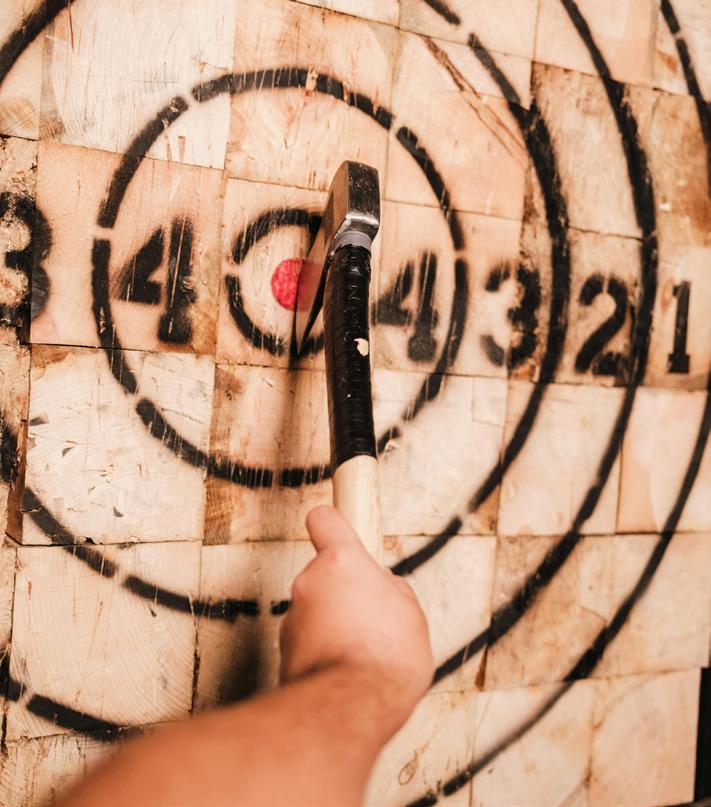
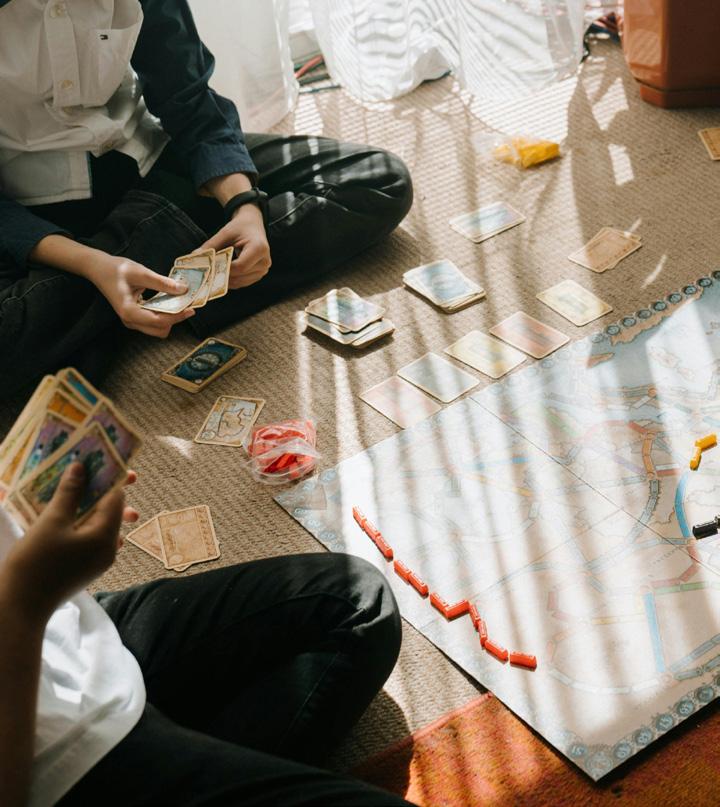

Looking for support with your mental health?
Here are some places that can help:
If you are in crisis and are concerned for your own safety, call 999 or go to A&E
Call Samaritans on 116 123 or email them at jo@samaritans.org
SANEline
SANEline offers support and information from 4pm–10pm: 0300 304 7000
Mind
Mind offers advice Mon–Fri 9am–6pm, except bank holidays: 0300 123 3393. Or email: info@mind.org.uk
Switchboard
Switchboard is a line for LGBT+ support. Open from 10am–10pm: 0800 0119 100. Or web chat: switchboard.lgbt
p22
p25
If you or someone you know is sleeping rough, visit thestreetlink.org.uk to connect with appropriate services
Message Family Lives via WhatsApp on 07441 444125 for support, or visit familylives.org.uk
p80
Call Drinkline (the UK’s national alcohol helpline) on 0300 123 1110 (weekdays 9am–8pm, weekends 11am–4pm)

• Pass me on to a friend who might appreciate some articles.
• Get crafty and use me for a vision board or collage.
• Keep me on a coffee table to pick up when you need a boost
• Remember I’m 100% recyclable, so pop me in your recycling bin.
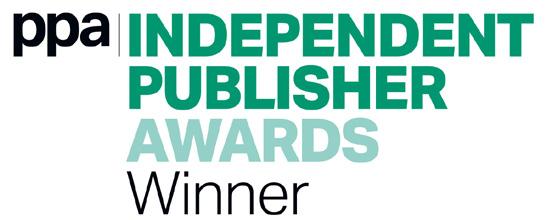

Our two-for-one tree commitment is made of two parts. Firstly, we source all our paper from FSC® certified sources. The FSC® label guarantees that the trees harvested are replaced, or allowed to regenerate naturally. Secondly, we will ensure an additional tree is planted for each one used, by making a suitable donation to a forestry charity. Happiful is a brand of Memiah Limited. The opinions, views and values expressed in Happiful are those of the authors of that content and do not necessarily represent our opinions, views or values. Nothing in the magazine constitutes advice on which you should rely. It is provided for general information purposes only. We work hard to achieve the highest possible editorial standards, however if you would like to pass on your feedback or have a complaint about Happiful, please email us at feedback@happiful.com. We do not accept liability for products and/or services offered by third parties. Memiah Limited is a private company limited by shares and registered in England and Wales with company number 05489185 and VAT number GB 920805837. Our registered office address is Building B, Riverside Way, Camberley, Surrey, GU15 3YL.
